Returning Gravitas to American Girl
In 1986, former teacher and entrepreneur Pleasant Rowland launched the eponymous Pleasant Company from her home state of Wisconsin. Rowland used her new company to create the American Girls Collection, the first three dolls of which debuted in 1993. American Girls, Rowland stated, were meant as an alternative to baby dolls and Barbies, the most common dolls girls of the era had available for their playtimes. While these dolls filled certain niches, Rowland noted their focuses could send narrow messages. Baby dolls placed girls in perpetual caretaker or “mommy” roles, while Barbies looked more like teenagers than the prepubescent girls playing with them, and were often associated with the material excess of the 1980s.
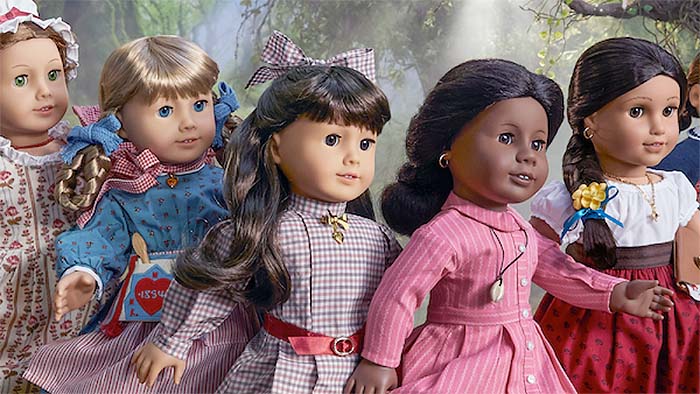
With American Girls, Pleasant Rowland intended to create a line of dolls that not only “looked like the girls who played with them”–authentically “little” girls with less stylized features than Barbies or babies–but would educate those girls as they played. Each American Girl would have a six-book historical fiction series centered on her era. The books would see their heroines experience such realities as war, poverty, racism, industrialization, and child labor or abuse. However, the presence of intrepid, resilient heroines and age-appropriate treatment of situations and stakes, would keep history both accessible and exciting.
Girls who read the books and played with the dolls would find new, relatable fictional friends. Moreover, they would find voices across history telling them that even though the events of the wider world were “big,” the “smaller,” girl-sized problems and emotions they faced were timeless. Her initial successes wilted into mixed reviews and outright failures, but plenty of opportunity exists to reunite the spirit of the “old” American Girl with the “new” successes that currently exist.
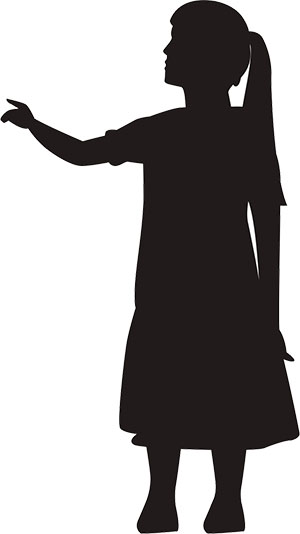
When we speak of “gravitas,” we refer to “dignity, seriousness, or solemnity of manner.” This does not mean American Girl ever had to be completely serious or scholarly to be taken seriously, nor does it now. It does mean, however, that certain incarnations of the brand have struck a deeper chord with child and adult readers than others. It does mean, some characterizations and plot arcs are deeper and more dignified than others. When we speak of American Girl maintaining or losing gravitas, we speak not of a wholesale loss of dignity, but a slow slide away from the “seriousness” and maturity its young readers were once able to explore through the brand.
Therefore, when we speak of “returning gravitas to American Girl,” we speak of a desire to return to seriousness and the challenges of age-appropriate, yet mature stories. Several ways to return gravitas exist. Finding them requires examining the historical and contemporary American Girl lines as they exist, teasing out existing dignity and maturity, and finding where the brands have gone wrong. Once we have this information, we can determine how to bring back dignity without retreating to the past, and whether “wrongs” can be redeemed.
The Original Fabulous Five (or Seven)
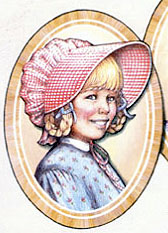
Within a decade, Pleasant Rowland’s original American Girl line–Kirsten Larson, a Swedish immigrant from 1854, Samantha, a privileged New Yorker from 1904, and Molly, a Midwestern middle class girl growing up on World War II’s home front–had grown to include Felicity in 1991 and Addy in 1993. The former was a budding Patriot from 1774 Colonial Williamsburg, while the latter, the line’s first Black doll, began her story as a North Carolina slave in 1864, escaping to freedom in Philadelphia at the end of her first book. This quintet, sometimes known as “the original five,” formed the backbone of American Girls Collection’s best-known, arguably golden, era among the millennial women at which they were aimed. The original quintet is sometimes expanded to include Josefina Montoya and Kit Kittredge, released in 1997 and 2000 respectively, but “the original five” are usually treated as part of their own generation.
The girls of the original quintet are extremely different in several ways. They hail from different states, with Kirsten the furthest north in Minnesota and Addy originally the furthest south in North Carolina, before relocating to Pennsylvania, where she escaped slavery in 1864. Most of the girls have a nuclear family base, but in everyday life, that family may not act like the traditional “Mom, Dad, boy, girl, and baby” combination. Molly has two living parents, but with Dad serving in World War II as a medic, Mom acts very much as a single parent. Addy is also from a two-parent family and a middle child with an older brother and baby sister. But her dad and older brother are sold in her first book. If Addy and Momma wish to escape slavery safely, they must leave toddler Esther behind. Thus, Addy spends over half her series as a de facto only child of a single mom.
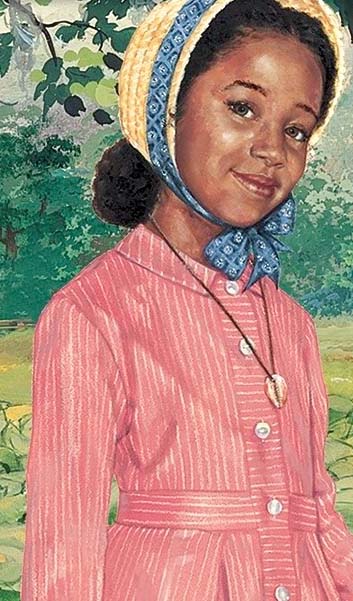
The girls also exhibit vastly different personalities. For instance, Addy, Kirsten, and Josefina are all introverted and show academic bents. But while Addy eventually becomes a top scholar in the running for a scholarship to an all-Black youth college program, Kirsten struggles with the new language and expectations of her school, showing the most aptitude for subjects she finds interesting. For her part, Josefina, like Addy, has to become literate at age nine. Once she does, she becomes dedicated to study, but not necessarily bookish. Rather, Josefina throws herself into healing. In so doing, she shows an appreciation for the practical–her community doesn’t have access to professional doctors–and an 1824 version of aptitude for STEM.
American girls growing up with the original five could find something to relate to in any and all of the original 5-7 characters. Readers and players quickly found treasures in both the dolls and the books chronicling their adventures. In fact, this writer remembers the books, not necessarily the dolls, earning prominent spots on her Christmas and birthday request lists. No matter how many dolls they had though, if any, the American Girls (AG) demographic loved their fictional friends’ adventures. Such adventures pulled readers in because while the “backdrop” of a major historical event or period always loomed large, problems a girl between the ages of 9 and 12 found more manageable remained in the foreground. Still, the two “halves” of each story never eclipsed each other.
Girl-Sized Plots With Grown-Up Backdrops
The original 5-7 American Girls were introduced to girls who, thus far, had not encountered a “book and doll” format in historical fiction. Real-life girls who read this genre likely enjoyed the protagonists and may have identified with them based on age, sex, race, or some external factor. However, real-life girls also probably got the idea historical fiction was “serious,” not a genre or cadre of topics with which to “play.” This would have created a detachment and separation between the average girl reading historical fiction, and not only the genre, but history itself.
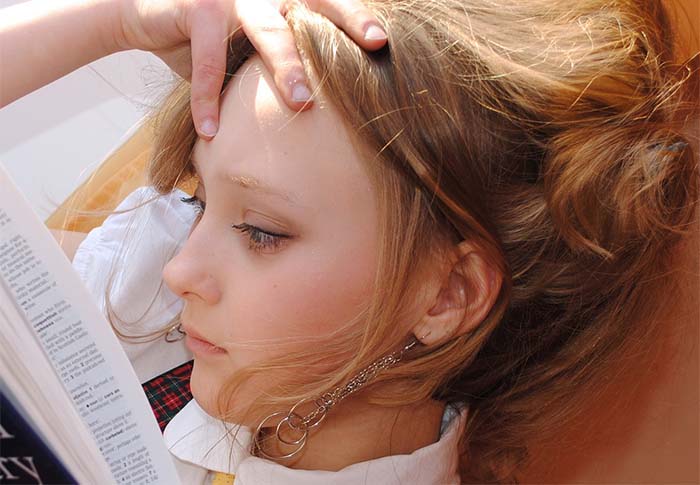
When Pleasant Company and American Girl sought to fill this gap, they knew they must do so with protagonists to whom girls could relate internally, not just externally. Having the same red hair as Felicity or wearing glasses like Molly would not be enough. Nor would similar, but small struggles such as poor performance in a school subject or concerns about what the winter holidays would look like in a lean or stressful period. American Girl’s readers would need an exact mix of historical seriousness, plus “girl-sized,” relatable problems that not only affected their favorite protagonists, but served as microcosms for the surrounding narratives. Thus, American Girl’s first “generation” of heroines was born with the challenge of getting this mix correct, not once but 5-7 times over 30-42 books per heroine.
As Kate of the YouTube channel Babbity Kate says, the original historical line didn’t get everything right in this mix. In her videos, she points out that some of the “family values” seen in the books can jar 21st-century readers, and some practices are just plain outdated (ex.: the use of corporal punishment in schools and at home, the lack of sympathetic responses to trauma). But Kate goes on to say, the original line created “nuanced [girls inside] complex worlds,” which gave real girls great “windows” and “curiosity” about what their lives were like.
Historical Eras, Timeless Emotions
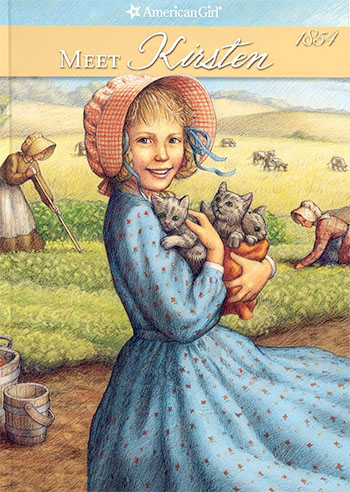
The “foreground” of an AG heroine’s story always related to the background somehow, sometimes overtly but often with more subtlety. The books’ titles hinted at the relationships. For instance, the first book was always titled Meet ____, with the heroine’s name filled in. The introductory novelette would focus on setting up the character’s historical period, the trials she faced, the major goals she would work toward, and the arc that would follow her through the next five installments. Kirsten Larson, for example, immigrated from Sweden to Minnesota in her “Meet book.” Introverted and given to timidity, Kirsten struggles with adjusting to her new country without letting the harshness of immigration and frontier life squelch her courage.
In her “Meet book,” Addy Walker does escape slavery, but not without living in its realities for nine years. When readers meet her then, she not only faces a life-threatening journey, but grapples with trauma’s aftermath, the need to “stuff” her emotions down for survival, and bitterness toward all white people. Unfortunately, slavery and pre-Civil Rights mores mean Addy must “mask” her emotions more than a girl her age should ever need to. She must be braver than a girl her age should need to, and make mental and emotional decisions beyond her years. Still, Addy makes the decision to do what her mom says and let love fill her heart instead of hate. When she does, she gives modern girls, especially those of color, a solid solution for the microaggressions and outright hatred they still face.
Even in AG books that do not cover “big” or “serious” topics, this same combination and gravitas can be found. The third and fourth books in each of the original quintet to septet’s collection concern holiday celebrations (usually Christmas) and the heroine’s tenth birthday, respectively. These are not usually occasions to discuss war, abuse, or the like. Yet these issues remain in the background and make the associated stories stronger. For instance, Felicity’s Christmastide involves an invitation to the governor’s New Year’s ball. The party will give tomboyish, independent Felicity a chance to show the social graces she’s learned at Miss Manderley’s school for gentlewomen and prove to her parents their investment was well spent. But the invitation also means leaving the sickbed of her seriously ill mother, who has tried to hide her illness throughout December but worsened over the season.
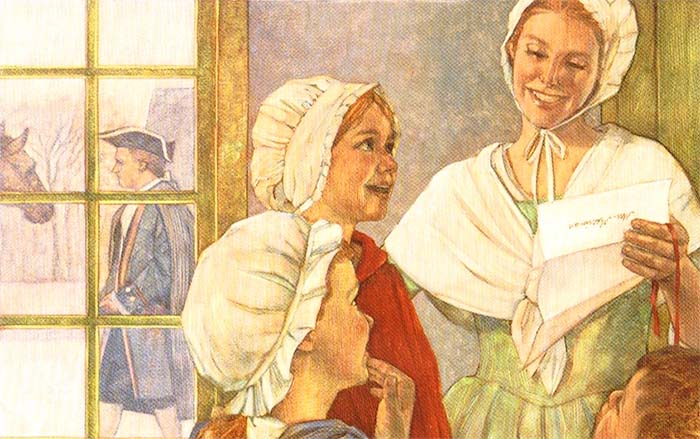
Felicity’s dilemma is juxtaposed with choices between the obvious persecution Patriots face, vs. the privilege, but tension, Loyalists like her teacher Miss Manderley and best friend Elizabeth currently live with. Felicity ultimately gets to “take a third option,” but her choice never reads as an easy way out or having it both ways. Instead, Felicity understands both paths have a price and the test of maturity comes in choosing the one you are willing to live with. When she chooses to stay with Mother on the night of the ball, she acknowledges that choice comes with the intrinsic reward of deciding for herself what the “right thing” is. This will stay true even though she’ll miss the ball and the chance to prove herself a “young gentlewoman.” But when Father and Mother respond to Felicity’s compassion with a way for her to attend the festivities after all, it doesn’t read as Felicity’s fairytale reward. Rather, it reads as the book’s expected “surprise.” It also sends the message that hard choices and unexpected boons go together in every era.
Girl-Sized Microcosms for National Changes
In another book, when Molly McEntire and her new friend Emily Bennett have a blow-up over how Molly wants to celebrate her birthday, it might read as if the girls are fighting about food and clothes. But when Emily, a British evacuee, bursts out, “Food and clothes! That’s all [you Americans] care about,” Molly and readers get a needed reality check. Molly knows some of the pain of World War II. Her physician dad is overseas, and she misses him terribly. Mom has had to start working, leaving Molly and her siblings in the care of a well-meaning but often strict housekeeper. Rationing has meant giving up many luxuries she loves, and even her leisure time revolves around the war effort. But as she admits to Emily, “[The war] hasn’t been as real for me.”
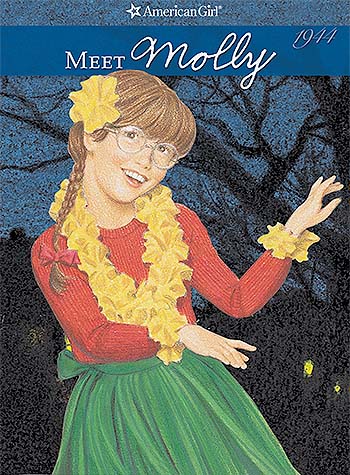
Remembering her friend has lived through the bombings, death, and trauma she has only heard of through newsreels and gold stars in windows helps Molly adjust her perspective. Molly realizes for the first time, WWII is real, and while it may not destroy her house or kill her loved ones, it could kill relationships she holds just as dear. She and readers have a chance to gain empathy and interact more intelligently with events that may be far away, but affect real people every day. Indeed, Molly takes her opportunity, letting Emily lead the plan for their joint “English tea birthday” and naming the puppy she receives as a gift Bennett, after her brave new friend (while Emily names hers Yank, showing new respect for Molly and Americans).
The gravitas of this combination never wavers through five heroines and 30 books. For fans who add Josefina and Kit to the original lineup, said gravitas gets to spread to the pre-U.S. annexation of New Mexico in 1824 and the Great Depression in 1934. Pleasant Rowland and the authors of the original AG books accomplished their goal in that history became relatable, accessible, and exciting to modern girls ages 9-12. More importantly though, the original series’ gravitas ensured something deeper happened below the surface. Although they were likely unaware, the American Girls Collection’s first readers and players absorbed a valuable message. Between five and seven voices spoke to them across history, saying, “We faced our challenges for our eras. You may hear that yours are too big or for adults only, and you may not face what we did. But if and when you face something similar, you can succeed and grow like we did.”
This message landed because it united macrocosms with microcosms, real hardships with the safety of everyday life, and world-altering events with questions related to burgeoning maturity, such as how to handle friendships and familial expectations. American Girl carried one of the ’90s biggest messages of female empowerment.
A New Octet for a New Generation
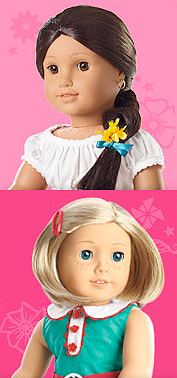
While Josefina and Kit are often added to the original quintet, their respective releases in 1997 and 2000 can be seen as the end of an era. In 1998, Mattel bought out Pleasant Company. The buyout heralded some potentially great changes for American Girl, which many new fans and their adult parents and guardians enjoyed. One such change, years in the making and arguably overdue, was the addition of even more historical characters. During the aughts and New Tens, the “second generation” of American Girls that began with Josefina and/or Kit, gained six more heroines. Altogether, the new septet included Kaya, Cecile, Marie-Grace, Rebecca, Julie, Caroline, Maryellen, and Melody.
The new octet was birthed for the generation who would grow up in the new millennium, a new historical era with new developments and expectations. The new octet’s stories, and the history behind their dolls, still held onto some of the original quintet or septet’s format. However, certain elements changed in large or small forms. The changes ushered in an eclectic mix of successes and failures, and which were which depended entirely on who was being asked.
Historical Success: Diverse Heroines, Multifaceted Stories
More Self-Determined Girls of Color
Discussions of diversity, inclusion, and equality are often seen as a product of the 2020s or mid- to late New Tens (circa 2015-2019). The truth is, these concepts gained steam as early as the aughts. The AG brand was on the cutting edge. Granted, some of their position came from negative backlash over the original quintet/septet and what these heroines lacked. For example, after the release of Kit Kittredge, the racial balance of characters was still 5 white to 2 girls of color (70% vs. 30%).
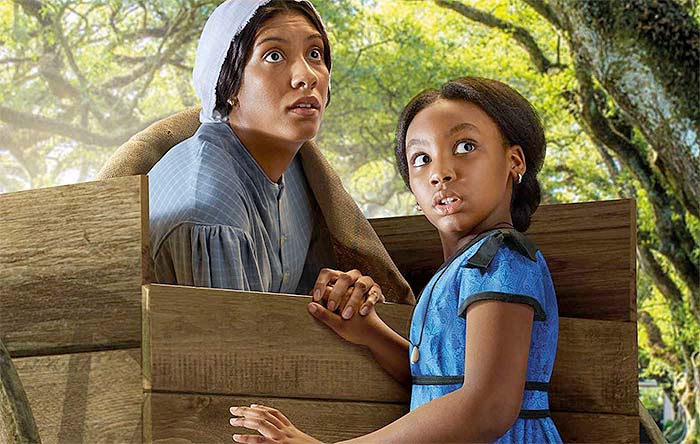
Parents and guardians had taken to the Internet and new social media to raise these concerns, as well as related ones. When white girls and their moms complained Addy’s textured hair was too hard to style, AG fans of color rebutted that the author of the Addy books, Connie Porter, had been approached with the issue of textured vs. straight hair while Addy’s line was still in production. Porter is Black and had been told that Black girls of Addy’s time period could and did have straight hair. But Porter pointed out giving a Black doll from 1864 straight hair would mean, “explaining exactly why that was.” In other words, Addy would have had to be a mixed race child, or a child who read Black, but still had genes coded for White skin. This would mean she would likely be written as the product of an affair or rape. Neither topic was or is considered age-appropriate for AG’s target demographic.
AG sought to expand their diversity, not just through race and color, but other traits and backstories. Kaya’naton’my, or Kaya, burst onto the scene in 2002 to great fanfare as AG’s debut First Nations heroine and doll. Her author, Janet Shaw, is white, but had a whole team behind her, ensuring meticulous research into Kaya’s tribe, the Nez Perce. Kaya’s books also make clear that though her grandparents have experienced European-initiated tragedies like smallpox, Kaya’s 1764 story takes place before “major” European contact. Additionally, instead of being confined to a state, Kaya lives “somewhere in the Pacific Northwest.” This is accurate to her tribe’s nomadic culture.
More Religious Diversity, Less Assimilation
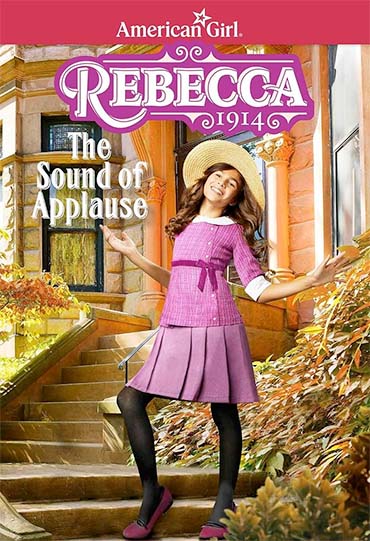
Later, American Girl explored religious diversity with Rebecca Rubin, whose stories and doll released in 2009. The seven-year gap points back to a weakness or failure on AG’s part, which we will discuss in the next section. However, Rebecca, who lives in 1914 New York, is a Jewish protagonist, the line’s first. Moreover, she is Russian Jewish, living in a multigenerational household wherein her grandparents, Bubbe and Zayde, nurture her connection to both faith and heritage. Contrast this with AG’s other immigrant character, the Swedish Kirsten, whose family tries to assimilate as much as possible.
A Saint Lucia celebration excepted, Kirsten’s Swedish culture is not explored. Rebecca, on the other hand, celebrates Hanukkah in her holiday story, and respectfully stands up to her teacher, who says all Americans should celebrate Christmas. Rebecca also celebrates Passover and her brother Victor’s bar mitzvah. She struggles not with how to assimilate, but how to honor her heritage, her faith, and the older generation she loves, while adjusting to her new country.
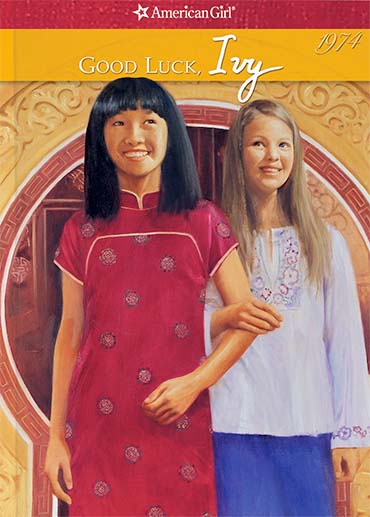
In addition to Rebecca, American Girl created Ivy Ling, “Best Friend” to Julie Albright, the 1974 American Girl, who is white. It is definitely disconcerting that Chinese-American Ivy is treated as a “satellite” to Julie, and not billed as the 1970s American Girl. However, Ivy did receive a book in the AG line proper, as well as other books and stories in lines like the American Girl Historical Mysteries. Within these, Ivy comes through as a fully self-determined Chinese-American girl.
Although her religion itself is not explored, Chinese customs and holidays not specifically tied to the “majority” religion, Christianity, are thoroughly explored. For instance, Ivy’s “holiday” book focuses on Chinese New Year, which Julie celebrates with her and in lieu of Christmas. Additionally, throughout her books and stories, Ivy deals with finding a balance between the “American” customs, food, and activities she loves, while showing equal love for Chinese counterparts. Ivy also shows healthy respect for Chinese social concepts like honor and shame, seeking to honor parents, grandparents, and family in the Chinese way.
More Focus on Situational Diversity
Finally, American Girl explored socioeconomic, familial, and other situational diversity through many historical girls created for the late aughts into the New Tens. In 2011, the company released Cecile Rey and Marie-Grace Gardner as a “Best Friends” duo, with three books each exclusively in their points of view. The girls live in 1853 New Orleans, somewhat familiar ground for American Girl. But while Marie-Grace is white, she is notably less financially comfortable than Cecile. She is also looked down on for being “American” rather than New Orleans’ more common Creole. Cecile, on the other hand, is a wealthy free Black girl whose family has been free for at least one generation. Additionally, the pairing is always rendered as “Cecile and Marie-Grace,” with Cecile receiving top billing.

Situational diversity pops up again with Julie Albright, who lives in 1974 San Francisco and is the first AG heroine with (amicably) divorced parents. Throughout her six books, Julie deals with the impact of divorce. For instance, her “school story” is titled Julie Tells Her Story. In it, Julie must decide whether to include her parents’ divorce in her assigned “Story of My Life.” Doing so would educate her classmates and remove some of the taboo from the subject. At the same time, Julie worries about being pitied or ostracized, or appearing to favor one parent over the other. Her ultimate choice to write and share about divorce communicates Julie’s arc is relatable, and that she gets to decide how divorce will impact her going forward.
Julie was released shortly before Maryellen Larkin, who lives in 1950s Florida and is a polio survivor. While Maryellen’s illness and disability are not covered as much as they could or arguably should be, she is spotlighted as a member of the line’s largest fictional family to date. Maryellen’s family has five siblings and thus, not as many resources or as much attention to go around as she’d like. At least one sister is already a young adult. This makes it harder for Maryellen to carve out her own niche, which she does throughout her books. Additionally, the presence of her “traditional ’50s” older sisters, plus her own desire to branch out into activities like rocket-building, let Maryellen explore how the definition of “American girl” is evolving in 1954.
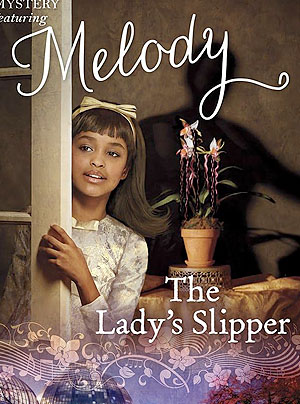
As for Melody Ellison, a Black girl living in 1964 Detroit and experiencing the Civil Rights Movement, she was released within a year of Maryellen. Like Rebecca, Melody is part of a multigenerational family; her grandparents, aunts, and uncles are not “live-in,” but constantly present. Additionally, Melody is neither underprivileged like former slave Addy, nor wealthy like 19th century free Black girl Cecile. Melody is AG’s first truly middle class heroine of color, experiencing some of the “microcosms” girls like Samantha or Molly did, alongside race-based oppression. For example, Melody explores the new roles and fashion choices of women through older sister Yvonne, who has a STEM-based job at a bank and wears an Afro. Melody participates in the Motown music scene, and though she finds Dr. Martin Luther King, Jr. inspiring, he inspires her to increase her singing talent and presence while navigating the hardships of gaining more civil rights.
Historical Success: Bringing History “Closer”
The post-1998 octet gave real-life girls more protagonists, thus more opportunities to find one or more with whom they related best. Indeed, the “second generation” of AG protagonists felt “closer” and more real than their predecessors probably did. Some of the closeness can be attributed to the decades in which new protagonists lived. Before 1998, the closest thing AG had to a “modern” character was Molly, whose WWII stories were still 40-50 years removed from the late ’80s-mid ’90s reader’s experience. As the new millennium approached, that gap closed significantly. Julie was still about 30 years older than a girl reading her books in 2004. Still, most AG characters were now being released with stories set just a decade or two apart, not centuries or half-centuries. Real readers now heard, “American girls exist in all eras, and they all look and act differently.”
As they closed the physical gaps between protagonists, as well as protagonists and readers, AG also brought history “closer” through smaller character arcs across fewer books. This gave writers and characters more time to grow, and characters chances to learn from different experiences. Thus, the characters matured at different paces and in different ways.
More “Shading” in Backgrounds and Foregrounds
The post-1998 octet did eventually move away from the “grown-up background, girl-sized foreground” format of their stories. However, this was not immediate or obvious. Several protagonists in the new octet maintained these backgrounds and foregrounds with greater “shading” to bring history closer to their modern readers’ worlds and experiences.
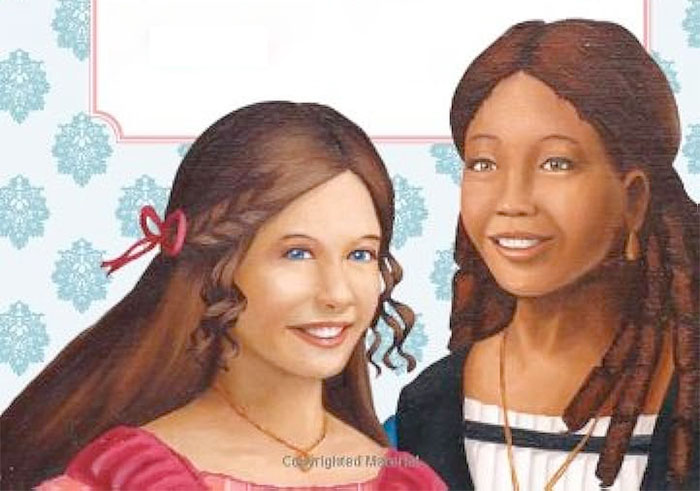
One great example comes from Cecile and Marie-Grace. Released as a pair, these two automatically made 1853 New Orleans accessible to modern girls because they had plenty in common as best friends, but were clearly different from each other (Black and Caucasian, wealthy and lower middle-class, Creole and born in the U.S.). Furthermore, both girls’ historical event, an infamous yellow fever plague, is still lesser-known in most history books. However, the threat of sickness and death gives Cecile and Marie-Grace’s 3:3 book split the “grown-up” feel of the previous AG generation’s stories.
For instance, Marie-Grace faces some extremely adult decisions and implications when the plague means she might have to leave New Orleans for good. Cecile faces some of the same implications when illness strikes someone she loves, and when she realizes her wealth won’t make the difference she wants, to the orphans she sincerely cares about. Watching both girls weather the plague while still experiencing volunteer work, singing lessons, and friendship troubles, can help modern girls understand how “localized” historical events can impact them and change them for the better. This is particularly true in a post-COVID-19 world.
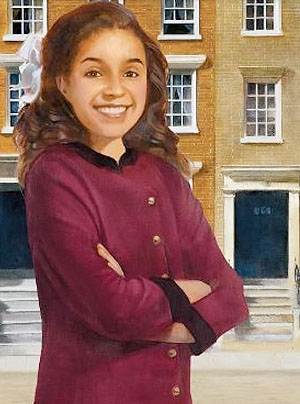
The same “shading” occurs with Rebecca, who lives in 1914 New York. When readers meet her, Rebecca has already lived in the U.S. for several years. However, her aunt, uncle, and cousins, including her best friend and “sister-cousin” Ana, have just immigrated from Russia. Therefore, readers get the “big” historical background of immigration via Ellis Island. But unlike with Kirsten Larson, whose entire arc encompassed immigration from Sweden through her first year in America, Rebecca’s arc focuses on the story of an American citizen with immigrant heritage. Ana, the “new” immigrant, provides a contrast and more potential for critical thinking.
Ana is a crucial character throughout Rebecca’s arc. In Rebecca and Ana, for instance, Rebecca becomes frustrated because her cousin isn’t learning English as fast or as well as Rebecca thinks she should. Ana ends up hurt, and Rebecca must learn to respect her journey toward adjusting to America. Through this plot, modern American readers can learn similar empathy for friends or classmates who may also be learning English, American customs, or how to execute any skills the readers take for granted.
Ana’s importance to Rebecca’s arc, and the contrast between “new” and “old” immigrant experiences, comes up again in Changes for Rebecca. Here, the “grown-up background” is the labor movement, labor strikes, and increased presence of unions common in the early 20th century. The harsh realities of these historical events hit home when Rebecca and Ana’s parents and older siblings are mistreated at work. Deciding how to respond carries a lot of weight, as speaking up or striking could make Ana’s family look like troublemakers in their still-new country, or Rebecca’s family look suspicious for supporting Ana’s family. Responding could also result in anti-Semitic backlash for the Rubins as a whole.
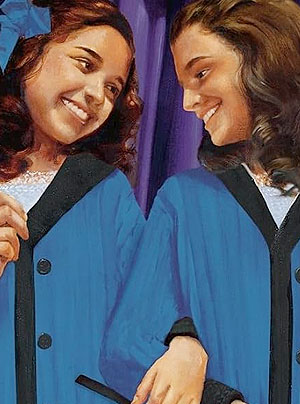
Rebecca uses her talent for acting to try understanding the labor movement better. However, her play unintentionally sanitizes what’s going on. Ana steps in to give her cousin a reality check, volunteering to essay the role of a cruel factory boss. Said role is the most out of character one Ana could take, and seeing it shakes Rebecca up enough to realize, what her family’s adults and teens are doing is the furthest thing from a game. Nor is it something Rebecca can easily “lighten up,” despite her unfailing optimism. Rebecca is inspired to speak out on behalf of labor strikers herself, and gets hit in the head with a rock for her trouble. Her injury is minor, but serious enough to catch adults’ attention because abuse of workers meant an innocent kid got hurt. Rebecca and Ana are hailed as heroines. As for modern readers, they stand to learn kids their age can and do face harsh realities with aplomb every day, and can and do make differences, even for the adults who face “bigger” implications than kids do.
Longer and More Impactful Arcs
Not all the new octet’s books were “shaded,” because they didn’t all follow the traditional format of Meet, Learns a Lesson, Surprise, Happy Birthday, Saves the Day, and Changes. For those book series that did not, the historical arcs remained, but were commonly broken up so readers could follow one “bigger” adventure through several “smaller” installments. The format did not always succeed 100%, but when it did, American Girl and its new protagonists received much-needed freshness. Similarly, modern readers got opportunities to plumb certain historical periods in more depth.
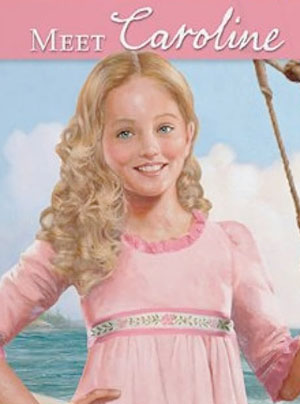
The first new octet American Girl to do this was Caroline Abbott, from 1812 New York (Sackets Harbor, as opposed to Samantha’s upstate Mt. Bedford or Rebecca’s New York City). In Meet Caroline, our heroine’s beloved Papa is taken prisoner in the War of 1812, and Caroline promises to be brave until he can return. However, Caroline doesn’t go on to live a relatively safe “home front life” as Molly did in WWII. Nor is her life impacted by but largely separate from the war as Addy’s was in 1864, when the Civil War was a year from ending. Instead, in her first book, Caroline lives through a British attack on Sackets Harbor. In other words, Caroline faces the possibility that those close to her will be injured, taken prisoner, or killed. The War of 1812 is real to her from minute one of her character arc. She must contend with it regardless of her age, sex, and innocence.
Had Caroline been a first-generation AG character, she might have survived the attack in her “Meet” book and then gone on to live a “normal” life until reunification with Papa in book six (a la Addy or Molly, or Felicity and Josefina, who both face the possibility of beloved friends and relatives leaving in their final books, but until then, don’t undergo significant change). Indeed, Caroline experiences some “normal” periods and girlhood travails, such as when she clashes with a cousin and friend who would rather “stay inside and style hair” than sail and climb trees as she likes to do. However, Caroline spends most of her books taking an active role in the War of 1812. Sometimes with her mom, sometimes on her own, Caroline visits her dad in prison, acts as a courier for secret messages, and uses her wits to outsmart British sympathizers.
Given that the closest thing modern readers had to Caroline’s war took place in the Middle East, and given that incarceration looks much different in the modern U.S. than in 1812, most of Caroline’s readers couldn’t relate on a personal level. Yet, experiencing this multi-book adventure with her likely made readers tap into courage and confidence. It may have inspired them to learn more about Caroline’s era, and seek to make a difference for people in tough situations how they could (e.g., writing cards and letters to soldiers overseas, raising awareness of abused groups such as trafficked children).
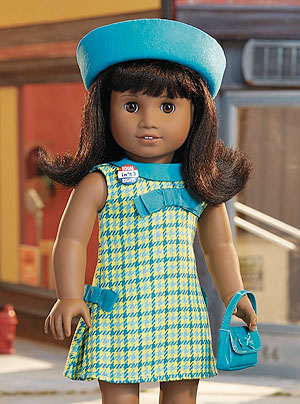
Melody Ellison from 1964 Detroit has a similar multi-book arc, although her books came out streamlined in a 3:3 format as part of the BeForever line. Melody doesn’t undertake a six-book adventure like Caroline, but all her books focus to some degree on her singing talent, how she will use it, and what kind of adult she will grow to be in an era where opportunities for Black women were increasing, but not without a fight.
Melody does not “learn a lesson” in a “school story” as her predecessors did. But she does use her voice to stand up in school and say the Pledge of Allegiance does not inherently include Black people, based on how Blacks are treated, even in the North. Therefore, the Pledge is a lie, and Melody is willing to face repercussions for insisting such. Melody is not a victim of a church bombing or injured in a Civil Rights protest, but she does go to the bank where her qualified older sister was turned down for a position based on race. She threatens to close her account and tell others to do so, too. She does find the church bombing so emotionally traumatic, she goes temporarily mute.
Melody’s books maintain these callbacks to Civil Rights or related events through six plots. When Melody and her friends decide to clean up a local playground and make it safer, Melody is placed in charge of the project. She learns how difficult leadership can be, and this is treated as a microcosm for Civil Rights leadership as she and her classmates face race-fueled opposition, as well as doubt and opposition from some of the adults they expected to support them.
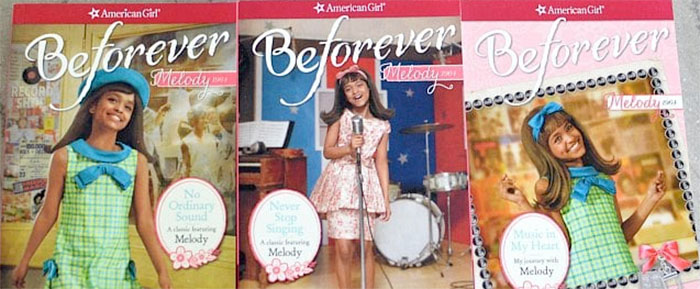
Throughout six books, Melody also enjoys activities like listening to Motown music and experimenting with different fashions and hairstyles. But she also faces obstacles like supporting older brother Dwayne when their parents disapprove of his musical ambitions, or being accused of planning to steal just because she went into the “wrong” shop.
As noted, this arc is not as “big” or adventurous as Caroline’s, which has garnered some deserved backlash. Melody as a character and doll has also gotten some backlash because as a ’60s Black character, she still appears with straightened hair in all her pictures and merchandise, and never with glasses, although her short Amazon movie showed her actress in glasses and braids. Finally, Melody never received six separate books, which seems suspicious alongside her race, perpetually straight hair, and arguably “too small” plot in the face of the Civil Rights Movement. This said, Melody does maintain a “shaded,” six-book arc with a grown-up/girl-sized format, which brings the “grown-up” issues closer to young readers.
Historical Failure: Uneven Highlighting and Erasure
Along with the successes of the new characters, American Girl experienced some weaknesses in their historical line. Some of these were outright failures, depending on who was being asked. Weaknesses or failures though, the negative elements combined with the new septet’s positive developments created a “mixed bag” for girls enjoying the AG brand after the 1998 Mattel buyout, as well as their parents and guardians.

Oddly Constructed New Lines
Post-Mattel buyout, American Girl created the short-lived “Best Friends” line, wherein a “main” American Girl’s best friend received a doll and 1-2 books each. Among the “Best Friends” were Felicity’s friend Elizabeth Cole, Samantha’s friend Nellie O’Malley, Kit’s friend Ruthie Smithens, and Molly’s friend Emily Bennett. “New” American Girl Julie also received a “Best Friend” in Ivy Ling, and as noted, Cecile and Marie-Grace were released together as a “Best Friend” pair. This puts the “Best Friends” count at 7. They are on “equal footing” with the “main” American Girls in terms of raw numbers. Plus, the Friends line does give interesting, new historical characters “top billing” and increased character development.
Successes Eclipsed With Failures
The “Best Friends” line does succeed in significant ways, especially exploring new points of view. “Main” American Girl Felicity Merriman is a staunch 1774 Patriot, but her best friend Elizabeth is a Loyalist. Thus, giving Elizabeth a story of her own communicates Loyalist leanings could be positive; Elizabeth is not a “bad guy” or “on the wrong side of history.” Elizabeth also gets some much-needed character development that the other Best Friends don’t necessarily receive. In Elizabeth’s case, she has always been the rule-follower and more cautious in the friendship pair. Yet in her book Very Funny, Elizabeth, she gets to question what a “proper young lady” should do and how she should handle problems like bullying. Elizabeth’s choice to stay within the bounds of propriety while still being assertive, communicates one need not be a bold or tomboyish girl like Felicity to get what one needs or wants.
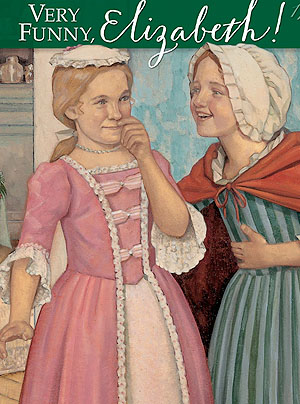
“Main” American Girls Samantha Parkington and Kit Kittredge are experiencing the “major” socioeconomic landscapes of their time periods. Samantha experiences wealth in the genteel Edwardian Era, while Kit experiences the common deprivations of the Great Depression. But their best friends Nellie and Ruthie experience the respective opposite economic situations. Nellie has lived the economic, physical, and emotional hardships of being an Irish immigrant in Edwardian New York City. These include child labor, constant worries about money and health, and eventually, a harsh orphanage and the danger of being permanently separated from her younger sisters. Samantha’s wealthy aunt and uncle adopt all three girls at the end of Changes for Samantha. It’s clear though, that their choice is unconventional for New York “society.” At times, Nellie’s gritty experiences continue “bumping against” Samantha’s more idealistic life. More often than not, Nellie struggles to fit into Samantha’s world and distinguish herself as more than Samantha’s formerly impoverished friend.
In contrast, Ruthie’s life went largely unchanged when the Depression hit because her dad is a banker. She enjoyed several privileges Kit lost, such as fancy clothes, extravagant Christmases and birthdays, and dance or ice-skating lessons. Granted, Kit never enjoyed dancing or ice-skating. But Ruthie’s abundance still rankles when Kit compares it to her life. Kit has to share her house with boarders, give up her room, wear hand-me-downs, and face realities Ruthie likely won’t, such as when she encounters her dad in a soup kitchen line. In fact, Kit and Ruthie experience a fallout in Kit’s Surprise because Ruthie constantly offers Kit “charity,” or implies Kit’s family is unhappy without her privileges. Ruthie means well but honestly does not understand she’s harming Kit’s dignity and insulting her family.
Whenever the “main” AG protagonists encounter problems like these alongside a friend, the series gets to explore the deep bonds common to girls’ friendships across eras, races, religions, socioeconomic backgrounds, and more. It is a shame then, that the Best Friends line was completely retired after only a few years, and that it received lackluster reception while it existed. If anything, many parents of AG fans felt the Best Friends were an excuse to create and sell more dolls, thus feed Mattel’s bursting coffers. The Best Friends line in particular ironically fed the materialism Pleasant Rowland sought to avoid with her original American Girls. Unfortunately, materialism was not the only problem Best Friends, the post-1998 historical octet, and the AG characters following, would face.
Creating, Then Erasing, Developed Diversity
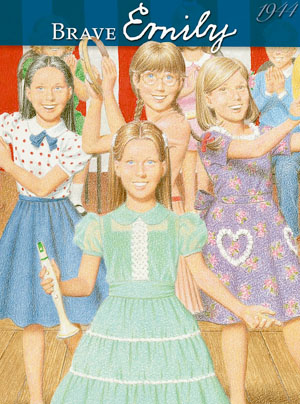
The Best Friends’ handling of their characters and plots is far from perfect. As noted, the Best Friends only receive one, at most two, books in which to encapsulate their entire personalities and arcs. If anything, some of those stories still read as “satellites” to their “more important” friends. Emily Bennett’s arc, for instance, revolves around her adjusting to an American school while living in the States to escape London bombings. She learns to stand up for herself in the face of teasing and unfair treatment, but only with support from Molly. This can read as Americans “rescuing” the beleaguered British in a WWII microcosm. It can also read that, because Molly is the American in a majority-American environment, her culture and customs are more acceptable than Emily’s. Therefore, Emily should make an effort to assimilate before or instead of American kids making an effort to accept her.
A similar problem pops up with Ivy Ling. Again, her culture and customs are given a lot of respect in Good Luck, Ivy, her “Best Friends” book. Yet as YouTube channel Dream Studios points out, Ivy’s conflict over whether to attend a gymnastics meet or spend time with her family seems odd for a plot meant to take up a whole book. Besides that, Ivy’s father supports her attending the gymnastics meet, causing friction between Mom and Dad over an “American” activity vs. a “Chinese” one. The “American” activity is chosen, thus privileged.
While this does highlight Ivy’s struggle with balancing two cultures and countries, that struggle is somewhat lost when American culture comes out ahead. Plus, as Dream Studios notes, it would’ve been easy to give Ivy a plot centered on the large historical implications of being Chinese-American in 1974. Such a plot would not have to be overly positive or revolve entirely around marginalization. However, the fact that Ivy’s author, Lisa Yee, did not choose such a plot seems odd. If Yee was told or pressured to write Ivy’s book as-is, it reads like oversimplification of who Ivy is.
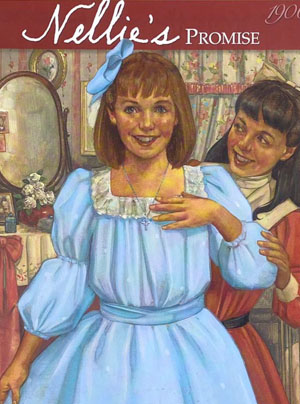
Finally, the “uneven highlighting” of certain situational diversity can be found between Samantha and Nellie. Nellie’s book, Nellie’s Promise, focuses on the adoption of Nellie and her younger sisters, Bridget and Jenny, into Samantha’s family. The adoption is threatened when Nellie’s abusive Uncle Mike shows up and lobbies for custody of the girls. The plot itself has good “bone structure,” in that Samantha, Nellie, and Samantha’s family drive home a pro-family, anti-prejudice message. But the stress of the situation tests the girls’ friendship, such that one Amazon reviewer complains, “the book focuses on their differences more than anything else.”
The reviewer went on to say by the end of Nellie’s Promise, the girls live together but “basically lead separate lives.” The plot of Nellie’s Promise, then, as well as other Samantha-centric books like The Curse of Ravenscourt, keep the girls in their standard “molds.” That is, Nellie exists to “educate” Samantha on the realities of those who have different nationalities or financial backgrounds than she does. For her part, Samantha looks like Nellie’s constant “savior,” as in Samantha Learns a Lesson, wherein Nellie only gets a decent education from Samantha’s tutelage. Failing that, Samantha reads as someone who would say something like, “Some of my best friends are poor” in order to excuse innocent but real ignorance.
Highlighting the Visible, Erasing the Invisible
Series-Wide Crisis of Faith
Along with diversity erasure, American Girl’s historical line, particularly the main one, tends to highlight visible differences while erasing invisible or less visible ones. The problem comes up most often in cases of religious, ability-based, or personality and plot arc diversity. For instance, Rebecca Rubin is Jewish, gets six full books (two with three edited stories in the BeForever incarnation, as does every American Girl in that line). She does celebrate Hanukkah, bar mitzvahs, and similar occasions.
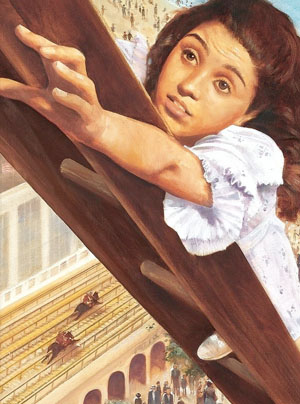
But of the post-1998 group, Rebecca is the only one with an overt religious background. Worse, outside her Hanukkah story, Rebecca’s faith is usually eclipsed. Her stories focus more on how she is pleasing or displeasing her family in adjusting to America. Again, that’s a great plot thread, particularly when compared to Kirsten, Emily, and Nellie, who are expected to assimilate. Yet since Rebecca is the only Jewish protagonist in over a decade, pulling her faith out of focus is strange and unfair.
Other AG protagonists experience this “crisis of faith” too, as writer Rachel Milkaszewski of AltFem Magazine points out. Milkaszewski, herself a practicing Catholic, writes that from 1998 forward, none of the girls who might come from a Christian background, acknowledge or portray this. Milkaszewski congratulates AG for portraying girls from all possible faith backgrounds, but notes “there hasn’t been a doll with a Christmas story since 2000,” and that protagonists like Caroline, Cecile, Marie-Grace, Melody, and Maryellen do not reflect the Christianity they likely would’ve embraced in their eras.
Melody, for instance, attends church regularly, but mostly to sing, and one of her stories focuses on the infamous bombing of a Birmingham church. Melody is understandably traumatized and uses her musical talent, based on faith, to cope. Additionally, it’s natural to focus on the bombing because the victims were near Melody’s age. Yet some readers and adult fans felt a church bombing was an odd choice considering the other tragedies that took place during the Civil Rights Movement, many of which also directly harmed, killed, or otherwise affected children. Other protagonists who would likely come from devout families, like Cecile and Marie-Grace, barely mention their faith (despite the fact both girls spend entire books working at a Catholic orphanage and interacting with nuns).
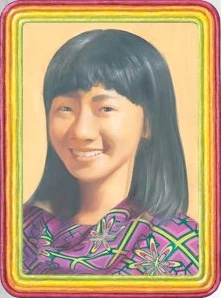
If, as Rachel Milkaszewski says, “Christianity is disappearing” from American Girl, then, Judaism has already disappeared, and other faiths are not even offered a place in the historical line or its offshoots. For instance, Ivy Ling is said to celebrate Chinese New Year, but this is not a religious holiday, nor is Ivy’s faith ever mentioned. Instead, Ivy is written “coded” Christian, as if she and her family might have given up a faith like Buddhism, Taoism, or folk religion to assimilate. The main historical line of AG has no Muslim, Shinto, Sikh, or folk religion followers, nor do plans to create them exist. And while most protagonists are at least “coded” Christian, AG’s outright refusal to acknowledge certain forms like Catholicism, even when said forms would be ubiquitous, is discouraging.
Faint But Present Ableism
Another group American Girl tends to erase or downplay in its historical line is disabled protagonists. Within the historical line, disability appears thrice, with Kaya’s adopted sister Speaking Rain, “main” protagonist Maryellen Larkin, and Julie Albright’s friend (not “Best Friend”) Joy Jenner. Speaking Rain is blind. Maryellen is a polio survivor. Joy is deaf (often rendered Deaf out of the community’s desire for regard as a culture). Kaya and Speaking Rain’s tribe and culture did not use “disability” as a concept, much less “disability accommodations,” and probably would have treated Speaking Rain’s blindness as natural. Both Maryellen and Joy live in eras without the Americans With Disabilities Act (ADA) or Individuals with Disabilities Education Act (IDEA). The latter barely existed in 1974, while the former wouldn’t exist for 16 more years. It makes sense then, that they would face outright bigotry or ingrained ableism (e.g., no accommodations offered in school, few or no accessible venues).
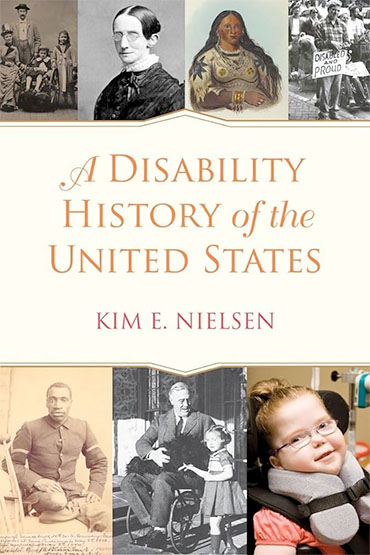
At the same time, disability is clumsily handled across all these characters’ storylines, if not by their communities, by the authors of their books. This starts as early as Kaya’s stories. Yes, Speaking Rain’s blindness is not ridiculed. If anything, the real Nez Perce tribe could have viewed blindness as a conduit of Speaking Rain’s abilities and gifts. Alternatively, they could have simply accepted, “Speaking Rain can’t see, so she does non-visual tasks that help our community,” an attitude Kim Nielsen hints at in her book A Disability History of the United States. Better, the orphaned Speaking Rain is accepted into Kaya’s family as her sister, with much more equality and smoothness than Nellie, Bridget, and Jenny were accepted into Samantha’s.
But while Speaking Rain doesn’t face ableism as such, she does get victimized or erased. Kaya loves her and treats blindness as a matter of course. Yet she also focuses on how much Speaking Rain can’t do at times, or how much the other girl will slow her down, as in Kaya’s Escape. During that book in fact, Speaking Rain gets left behind with an enemy tribe while Kaya sets out alone. It’s clear the tribe won’t abuse Speaking Rain, and in truth, Speaking Rain urged Kaya to go without her so she wouldn’t be a worry. Yet in the 21st century, a disabled character saying this, plus being left in enemy hands for several more books, never to be heard from, reads odd at best. The fact that Speaking Rain is a secondary character and secondary friend to Kaya (as opposed to say, Swan Circling), highlights the disparity more.
As for Maryellen and Joy, they don’t simply deal with accurate systemic ableism. Both their disabilities are almost entirely erased or “othered.” In Maryellen’s case, her survivorship is mentioned throughout her books. Yet, Maryellen can walk, breathe, and move as well as any child who did not contract polio in 1954. Her disability is never mentioned as part of her personality or what she’s passionate about. Instead, Maryellen is painted as a tomboyish “Academic Athlete” type of girl whose biggest ambitions include breaking out of her middle child role and “being the hero” like her television heroes The Lone Ranger or Davey Crockett.
Thus, Maryellen is “coded” abled. The one exception appears to be in her short Amazon movie, where she reminisces about having polio and participates in March of Dimes. Even more discouraging, March of Dimes is an organization many disabled people and their allies now find problematic. Most of the money the organization raises does not go toward helping disabled people in any way, much less living the autonomous life Maryellen does. March of Dimes’ mission revolves around “prevention and cure” of disabilities, which made sense in the days of incurable polio but is now outdated and tone deaf.
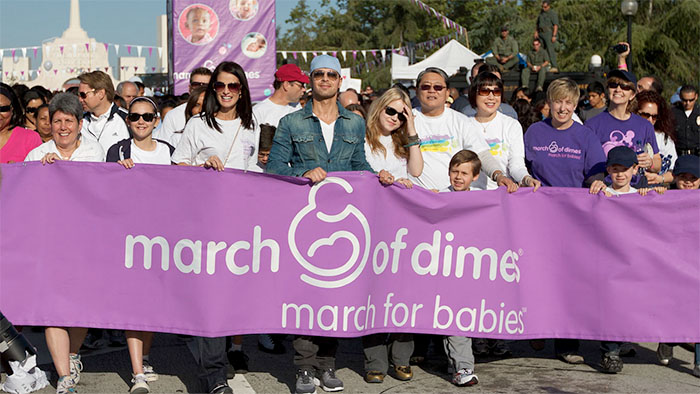
Joy’s case comes off even worse. She only features in Changes for Julie, wherein Julie runs for class president and picks Joy as her vice-president. Julie’s choice incites bigotry from a clique called the Water Fountain Girls, who routinely mock sign language and Joy’s voice without reprisal. The student body, excepting Julie, casts aspersions on Joy’s ability to hold any student government position, and the girls’ teacher Ms. Duncan regularly penalizes Joy for doing things like whispering in class. Ms. Duncan is never told Joy does this so she can follow along in a hearing classroom wherein she’s not accommodated. Nor does this problem ever occur to the teacher, and nor does Joy ever receive an apology for being unjustly punished.
Julie and Joy do “team up” to show two girls, one of whom is ability-diverse, can lead fellow students and positively impact their school. Their actions result in the Water Fountain Girls getting held accountable. But in the case of the Water Fountain Girls, Julie volunteers Joy to give them sign language lessons so they can “understand” deafness better (Julie participates, but secondarily). Additionally, Julie’s focus is more about coming up with an alternative to Ms. Duncan’s traditional sentence-writing punishment, than increasing Joy’s acceptance. Couple this with the fact Julie, not Joy, campaigns actively for her government position, and wins the “bigger” position in the bargain, and it looks as if Joy, thus disabled people, must always be secondary or subordinate to abled people.
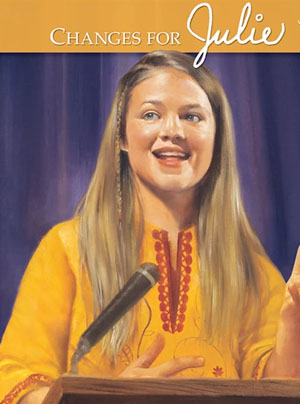
Altogether, Changes for Julie starts reading as if Julie used Joy, who was never seen before or since, to further her own ambitions. Yes, Julie is doubted and marginalized because she’s a girl, but wins support from girls and boys in her campaign. The message, then, becomes, “Yeah, but at least Julie’s abled.” It comes across as another cheap shot. Joy, on the other hand, becomes a conduit of inspiration porn who might well not succeed or have friends without an abled girl’s support. Her quieter, more cautious nature and her alliterative name alongside Julie’s makes Joy seem like a last-book afterthought.
Smaller Problems and Plots
The post-1998 octet’s plots and personalities are sometimes, if not often, successful. Some storylines maintain the format of “grown-up background inside girl-sized foreground,” and the accompanying microcosms. Cecile, for instance, gets to explore her opera-singing talent, artistic bent, and future as a free Black girl inside the background of the 1850s, an era in which modern children are unfortunately often taught, most Black people were enslaved. Melody’s books make clear that the Civil Rights Movement, while seen as “grown-up,” had a powerful impact on kids, such as when Melody experiences trauma from hearing about the church bombing or speaks out that, “The Pledge of Allegiance is a lie!” Kaya’s personal struggles with competitiveness, impulsivity, and carelessness provide a microcosm for how she fits into the Nez Perce tribe.
That said, many of the post-1998 octet’s plots come off as “smaller” and “easier to digest” than fans of the original quintet/septet remember. Failing that, they come off as recycled. Maryellen’s determination to get her share of attention as a middle child is relatable, but feels incongruous when it’s allowed to take up almost her whole “Meet” book. Kaya’s inner battles can be “big” and heartbreaking, such as when her actions cause the tribe’s Whipwoman to punish innocent kids, or when she loses her adopted sister and a pet she loves.
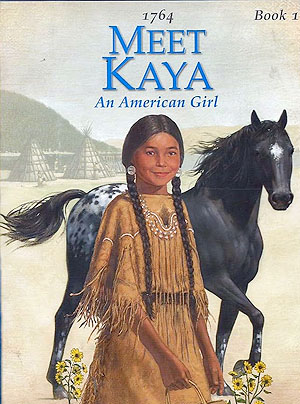
In the absence of an overarching historical event though, Kaya’s books often read as if she is put-upon or even unjustly, unnecessarily abused. And while Rebecca does deal with some intergenerational struggles and anti-Semitic attitudes (Hanukkah treated as un-American), her near-constant focus on movies and playacting through her second three books can make her come off as overly naive or spoiled. Plus, her desire for attention as a middle child makes it seem as if she and Maryellen are recycling each other’s personalities.
Finally, despite the continuation of gravitas, the post-1998 octet’s plots and personalities slowly began becoming “smaller” and “easier” than the original quintet/septet’s. The change began with the BeForever historical line revamp, which had already received backlash for retiring almost all of AG’s original characters and some newer ones, including Addy, Josefina, and Cecile. In the BeForever line, not only were AG’s diversity ratios way off again, but the “old” characters’ adventures were abridged and streamlined.
Meanwhile, with notable exceptions, “new” characters did not face the same caliber of coming-of-age problems previous ones did. Rebecca, for example, does learn valuable lessons about what being “American” means as a second-generation Jewish immigrant, and she does gain a mature perspective on current issues like labor strikes. But her summer “to the rescue” story hinges on rescuing her (conveniently) timid cousin Ana from the top of a Ferris wheel, rather than say, helping a friend make a life-changing decision as Felicity did, or learning the “idyllic fantasies” of someone else’s life don’t stand up to reality, as Kit did.
Similarly, Julie experiences “pioneer life” through a camping weekend, but her plot is more about how she, a 1974 girl, must adjust to temporary deprivation than how the experience will help her come of age. And while 1954 is peacetime for the U.S., Maryellen’s books barely mention the Cold War. When they do, the stories read as if Maryellen “teaches” her class about it, when in reality, her classmates would’ve been extremely familiar with the stakes, thanks to the news, “duck and cover” drills, and so forth.
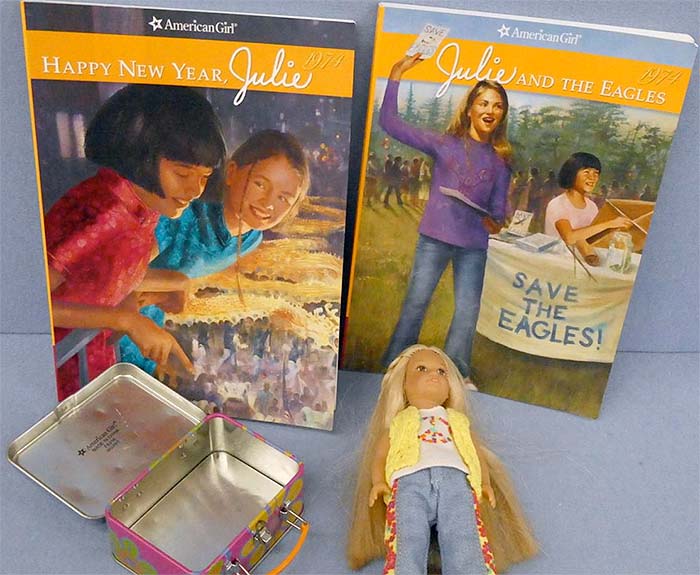
Continuing Challenges for the Newest Quintet
After the introduction of Julie Albright, it seemed American Girl’s historical line had reached its conclusion. After all, 1974 was just under a decade from the company’s original inception and just about 30 years from when the current generation of girls would be reading Julie’s books. Girls eyeing new dolls, outfits, and accessories could now recognize “historical” fashions and playthings as items their moms, aunts, and grandmas once wore or played with, perhaps still owned. But surprisingly enough, the AG historical line did expand after Julie. Sometimes it added to decades past, but sometimes, the “time machine” kept pushing forward. As with the post-1998 octet, the results proved, are still proving, a mixed bag.
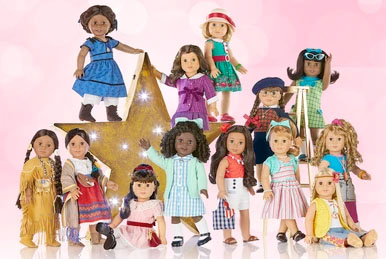
Currently, the newest heroines make up a quintet: Nanea Mitchell, Courtney Moore, Claudie Wells, and Isabel and Nicki Hoffman (fraternal twin sisters, released together in 2023). Nanea has the earliest release date of 2017, but can be considered a “late Tens/2020s” doll, while Courtney, Claudie, Isabel, and Nicki were all released between 2020 and 2023. Additionally, while Nanea is from 1941 and Claudie from 1922, Courtney, Isabel, and Nicki are from 1986 and 1999, respectively. In other words, the eras of original AG fans are now considered “historical,” a decision that has sparked plenty of online ribbing and not a little controversy.
That is, bringing “historical” heroines from such recent decades on board could open up new opportunities for AG’s historical fiction authors and doll designers. At the same time, it means the historical line may not have anywhere else to go. Since historical fiction is the foundation of the brand, this may signal AG has burned itself out. Either way though, the newest historical quartet has faced, and will face, challenges their 15 predecessors never did.
The Incongruity of Nanea
The first challenge for this New Tens/2020s quintet unfortunately lies in its first historical protagonist, Nanea Mitchell. A half-Hawaiian girl living in 1941, Nanea lives through Pearl Harbor in real time. Therefore, she has a better and more mature grip on WWII than did Molly McEntire, whose stories took place in the 1944 Midwest as the war was ending, and whose attitude often revealed how sheltered she was. Additionally, Nanea’s story is unique in several small, but significant ways. She is the first American Girl not from the Lower 48 States. She is also the first mixed-race, mixed-heritage historical heroine, with both Hawaiian and Scottish roots. Finally, unlike Addy, Melody, Kaya, and other protagonists of color, Nanea has white friends who are secondary to her, rather than the other way around. Therefore, strong arguments exist for Nanea’s stories being needed in the AG canon.

At the same time, Nanea’s incongruity cannot be ignored. Since her release, many adult fans from both sides of the political aisle have taken to social media to ask why AG added Nanea, a World War II heroine, when Molly already existed. Some fans claim Nanea looks too much like a Wellie-Wisher, one of the contemporary dolls aimed at younger girls ages 5-8. Still others claim Nanea was released too closely to contemporary characters Corrine and Gwynn, who are Chinese-American.
These questions and accusations gave rise to some uncomfortable discussions, such as whether Molly fans were racist or whether American Girl was trying too hard to capitalize on a heroine “type” they had already created several times over. With only social media anecdotes to go on, nothing can be proven one way or the other. However, while the protest, “But Molly exists” is definitely petty, the argument could be made that Nanea, more than most historical protagonists, was made in response to certain trends, or even mistakes AG made in the past. For example, the children’s, young adult, and adult literature markets were bursting with WWII fiction in 2017 and continue to burst, so it’s not out of line to wonder if Nanea was some form of a response to that.
Additionally, the release of Nanea alongside the Chinese-American Corrine and Gwynn reads like a response to the quick retirement of Ivy Ling. The Best Friends line and AG as a whole received bad press for this initially, and continues receiving it on social media, such as through YouTube channel Dream Studios.
The strangest thing about Nanea though, is her historical date compared to those of the dolls released closest to her, on either side. It’s true that Maryellen and Melody, released in 2015 and 2016 respectively, are a mere decade or two younger than Nanea. It’s also true that Claudie, released in 2020, is just about two decades older than Nanea. Courtney however, who was released three years after Nanea, is 45 years younger, and Isabel and Nicki over 50 years younger. This means Nanea is as far removed from some “contemporaries” as Molly was from her original readers. The fact that Nanea and Claudie are the only two “truly” historical characters in the newest quintet, and are only two decades apart, does not help Nanea’s case.
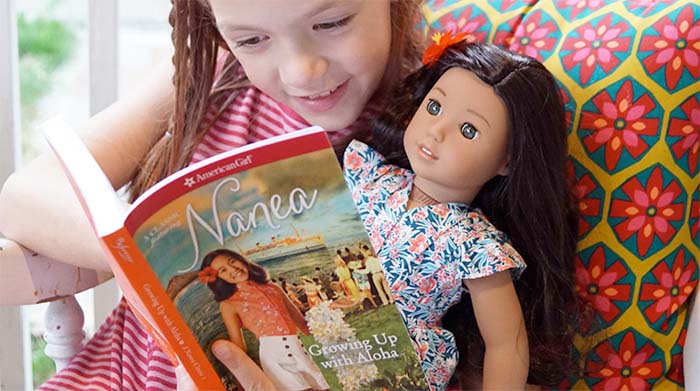
The detachment between Nanea, Claudie, and the rest of the most current quintet gives unfortunate credence to the idea that Nanea was created to cater to trends. It also disrespects Nanea’s author Dorinda Nicholson, who lived through Pearl Harbor herself at age six. Thirdly and perhaps most disturbing, the release of Nanea three whole years before Claudie’s release, gives credence to the idea of both dolls, heroines of color, being created as not only trend responses, but tokens. Had there been just one or two more protagonists from eras closer to Nanea and Claudie’s, no matter their race or background, this might not be an issue. But in creating a mixed-heritage Hawaiian girl, waiting three years and the turn of a new decade to create another Black girl, and allowing detachment from the other 2020s girls, AG has set itself up for controversy yet again.
But more discouraging than Nanea’s detachment from the dolls released alongside her, and the rest of the line, is how repetitive her arc feels. Granted, her character and stories themselves are unique. Nanea, for instance, must face the possibility of an older brother, a kid near her age, going to war instead of a parent. She grieves when her best friend must leave Hawaii for good, and like Caroline, she lives with the realities of wartime every day. In fact, Nanea can’t recover “normalcy” no matter how hard she tries, a feeling any girl who remembers the pandemic can identify with.
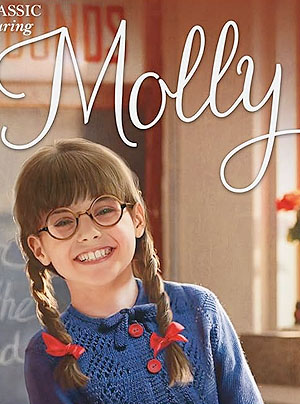
Still, Nanea’s author and other creators have stated the purpose of Nanea’s coming-of-age story is to teach “resilience, responsibility to others, and contributing to the common good.” These lessons were not only already present in Molly’s WWII stories, but can be found across eras in all the other protagonists’ books. This is not necessarily negative, as it hearkens back to the idea of timeless emotions and experiences Pleasant Rowland sought to convey. But considering Nanea’s era is somewhat a repeat, and rather detached from the decades AG had most recently explored before her release, it feels a bit stale.
The Strange Placement and Treatment of Claudie
Stale or not, perhaps Claudie Wells could redeem Nanea and her odd placement in the historical line alongside three ’80s and ’90s girls. Claudie has indeed broken new ground, not only for American Girls of color but the historical line as a whole. Like Cecile and Melody, she is a free Black protagonist, but being from a lower middle-class family and 1922, is more likely to face race-based oppression than her predecessors, without the backdrop of coming civil equality.
However, Claudie also grows up in New York City during the Harlem Renaissance. Black artists, writers, dancers, and actors surround her, and her stories focus a lot on how Black culture grew and thrived during Claudie’s time period. In other words, oppression is not ignored, but it is not the impetus for all of Claudie’s growth and maturity. That tends to come from Claudie’s experiences within her family and neighborhood. Because these happen alongside the “birth” and “rebirth” of her community and city, Claudie’s coming-of-age arcs feel more mature than similar ones from heroines like Maryellen and Julie.
Claudie also has a locus of devoted fans, mostly based on her appearance and collection of outfits and accessories. To wit, Claudie has textured hair, but is also the first Black AG protagonist to wear it down and curled, not only in book illustrations but as a doll. For many adult fans, this clearly communicates their daughters can and should embrace and enjoy natural hair in all styles. Additionally, Claudie loves fashion, and her clothing reflects that interest. Her outfits include a mint green winter coat and beret ensemble, two jazz-inspired outfits filled with sparkles, and an age-appropriate flapper outfit with a faux fur stole.
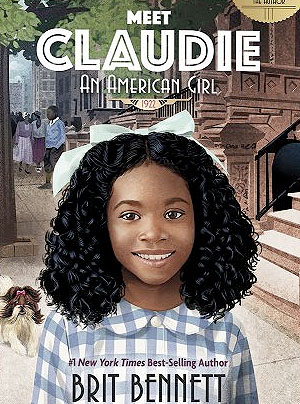
Most of Claudie’s outfits include some form of hat, usually beribboned or sporting accessories like pompoms. Her sleepwear, a pair of sunny yellow pajamas, includes a purple sleep bonnet Black girls of her time, and Black girls today, might wear to preserve their hairstyles. When compared to other Black protagonists’ collections–Addy’s “plainer” outfits or Melody’s outfits and hair, which still hearkened back to “white” ’60s trends–Claudie’s collection embraces Black culture and vibrates with Black joy.
Considering her groundbreaking moves and vocal fan base, it’s a shame Claudie has fallen into a trap similar to the one set for Nanea. That is, her small base aside, Claudie hasn’t received nearly the attention of her historical predecessors, or even fellow quintet-dwellers like Courtney. American Girl’s choice to release a 1920s girl after a 1940s one, means Claudie feels a bit “displaced” in the most recent batch of historical characters. It’s easy for her to slip through the cracks, and when she is remembered, it sometimes takes looking at her outfits to remember what era Claudie comes from. Where Nanea seems to “cut into” the historical line then, Claudie feels unjustly invisible.
Worse, Claudie is the first “truly” historical American Girl to receive only one book so far. Titled simply Meet Claudie, the book appears to be a primer on Claudie, the Wells family, and Claudie’s world, as are all other “Meet” books. But from the Amazon summary, Meet Claudie reads as a streamlining or abridgement of several books or plots, without the benefit of BeForever branding or the explanation of 3:3 retooling. Claudie comes across as only getting, maybe needing, one story for real girls to know and understand her. Considering Claudie’s race and background, plus the possibilities that should have been explored in her era, these choices make the AG brand look quite suspicious.
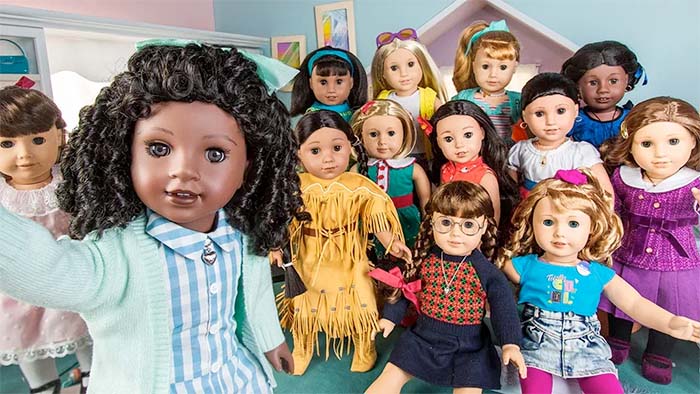
Finally and most discouragingly, Claudie’s story might have the lowest stakes of any historical protagonist American Girl has created. Amazon does not allow viewers to “look inside” Meet Claudie, so most information must be gleaned from promotional materials. From there, readers learn Claudie’s major arc focuses mostly on “finding her thing.” In other words, growing up in the Harlem Renaissance has made Claudie feel she is the only person she knows without some special talent. She “tries on” different talents, and is able to use some of these in larger coming-of-age plots, such as saving her family’s beloved boarding house from closure.
Remember though, Rebecca Rubin also grappled with her theatrical talent’s place in her life, once using it to raise funds for her family (and earning a scolding). Maryellen Larkin spent almost every story in her collection trying to extricate herself from the “middle child” label and prove she could be “in charge.” Like some other protagonists then, Claudie falls prey to recycled plotlines and weak coming-of-age arcs. As with Rebecca, Claudie’s fixation on “finding her thing” ends up reading less as determination and more as childish naivete.
The Mixed Reception of Courtney
If Nanea is too detached from her contemporaries in doll world, and Claudie is placed too oddly to attach at all, Courtney, Isabel, and Nicki may be much too close to their readers’ worlds. Their releases in 2020-2023 have ushered in a definite new era for American Girl. Plenty of interesting questions exist regarding where the franchise can, will, or should go from here, and many of the potential answers are undeniably exciting. But it cannot be denied, the initial reaction to Courtney’s release, and later Isabel and Nicki’s, the “’90s twins,” was unadulterated shock–and not the good kind.
“Courtney Moore is from 1986. 19-FREAKING-86,” a Twitter (now X) user exclaimed upon the ’80s American Girl’s release. The tweet touched off thousands of others as former AG fans, many of them current parents and guardians to new fans, “flocked” to social media to vent. “I’m officially old” was a common refrain. This writer, herself born in 1986, got in on the fun, posting a meme from Freaky Friday wherein Jamie Curtis exclaims, “I’m like the Crypt Keeper!” But fun aside, plenty of AG fans stopped laughing long enough to ask, “Is 1986 really ‘historical?'”
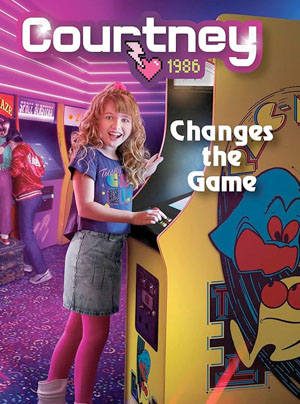
Of course, 1986 is now almost 40 years in the past, so “old” jokes aside, skepticism surrounding Courtney died down fairly fast. Like many earlier American Girl stories, Courtney’s unites “localized” issues with national ones (e.g., Courtney’s desire to prove herself among her male gamer friends, one of whom has AIDS. His experiences nudge Courtney to educate herself and others). Courtney also comes alongside Julie as a child of divorce, as well as the first American Girl from a blended family, still a novel concept in the mid-’80s. Her passion for gaming, united with passions for activities like shopping at the mall and collecting Strawberry Shortcake merchandise, tells real girls it’s great to be well-rounded. A girl who enjoys STEM need not be wholly focused on math and science; she can channel her interests into game and graphic design. A girl who loves pink and uses what was termed “Valley Girl slang” in Courtney’s era is not vapid. And while a real girl’s family may not be “perfect,” as seen in ’80s sitcoms, that family can be perfect for her.
Still, Courtney’s good messages got eclipsed and found some more detractors with the advent of the Hoffman twins, Isabel and Nicki. The sisters are ten in 1999, placing them smack in American Girl’s heyday. Their collections and promotional materials often picture mock-ups of early AG webpages, and AG commonly references itself in the Hoffman sisters’ books. Therefore, along with more good-natured ribbing about original fans aging, there are now legitimate questions about what AG’s historical line is doing as a whole. In creating Isabel and Nicki, the line and franchise may have burned itself out. At the least, the twins’ collections and plots show they’ve run short on ideas.
The “Nearsightedness” of Isabel and Nicki
Like Courtney, Isabel and Nicki have several strong points. The nostalgia factor of their stories aside, plenty of historical 1999 issues provide discussion fodder for current AG fans and their families. For instance, Nicki is terrified of the Y2K bug, even though Mom is a coder and has reassured her daughter she is working hard to find solutions. Isabel falls prey to “mean girl” behavior from her friend group, a precursor to the heightened awareness of bullying that would overtake news outlets in coming years.
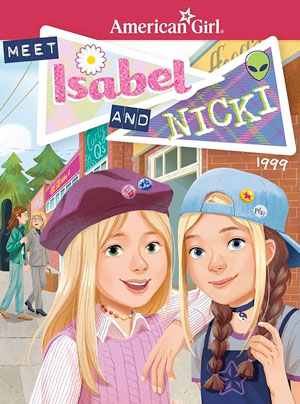
In addition, Nicki and Isabel are the first American Girls from an interfaith household (Dad is Jewish, Mom is Christian). They’re the first pair of historical girls whose personalities receive equal footing. (In past matchups, such as Felicity and Elizabeth or Molly and Emily, the “main” American Girl was usually the more extroverted, excitable, or leadership-minded. Here, cautious Nicki gets as much page time and character development as bubbly Isabel). Plus, while readers might expect introverted Nicki to be the “girly twin,” she’s a tomboyish skater. Extroverted Isabel is more “girly,” though her tennis skills mean both girls are athletes and subvert the stereotype that girls who like sports are “tomboys.” The switch from the “expected” is even reflected in the twins’ pets. Isabel prefers cats, who are often seen as “quiet” pets, while Nicki is a dog-lover.
Releasing the Hoffman twins together and letting them buck stereotypes, or at least expected likes and dislikes, was a strong move on American Girl’s part. Isabel and Nicki brought back the potential character depth of the Best Friends, without shortchanging one heroine or another. Making the girls close sisters while giving them clear, contrasting interests also lets real readers identify with both in different ways. (This writer is herself an “Isabel” in that she loves cats and would’ve loved Isabel’s tailored-yet-sparkly style. Yet she is a “Nicki” in that she’s an introvert, a writer, and a music-lover who prefers gaming to the athletic field). Still, it’s clear from reading the Hoffmans’ one story that they are the most “nearsighted” of AG’s current quintet. One could argue they are not historical at all, no matter that the ’90s are now 30 years in the past. One could even question why these characters exist, in view of the Just Like You dolls that were released in the ’90s and the Create Your Own and Truly Me dolls that have been offered since.
Isabel and Nicki do not get an arc like their predecessors, even if those predecessors, such as Nanea and Claudie, received only one or two books. They get one story set on New Year’s Eve, 1999, which packs several events into a limited number of chapters. With the exception of Nicki’s Y2K fear and the millennium celebration in their hometown of Seattle–later cancelled for fear of the same bug–none of these events are historical. The bulk of Nicki and Isabel’s book is taken up with everyday, easily solved issues like Isabel redecorating the girls’ shared room without Nicki’s knowledge. Any attempt to bring history back into focus gets derailed as the sisters disagree over New Year’s goals and resolutions, or the Hoffman parents give a bare nod to their interfaith status without relating it to anything else in the book.
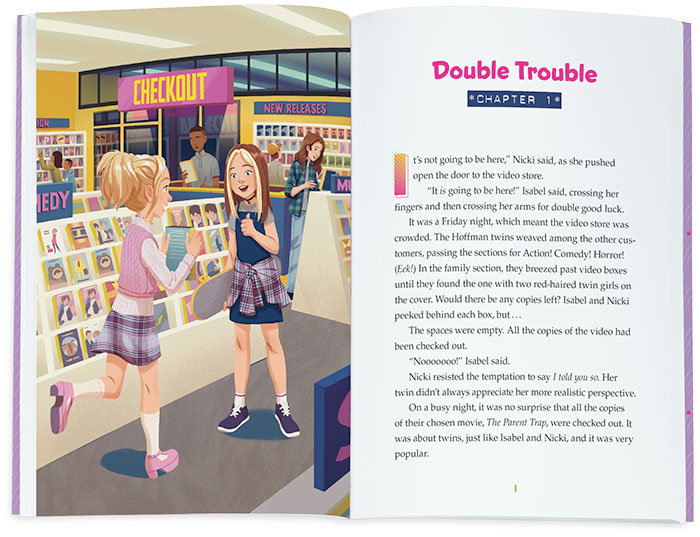
Overall then, the Hoffman sisters, who should’ve been great additions to American Girl, come across as attempts to sell more dolls and let their line poke fun at itself. Nicki and Isabel feed the rampant consumerism American Girl has been excoriated for in recent decades. There is little to no evidence that tacit approval of consumerism was unintentional. Moreover, Isabel and Nicki’s story is so packed, yet so light on plot, that it’s difficult to say what real-life girls are meant to learn from them.
If the answer is, basic lessons about getting along with siblings or accepting a non-traditional family, those lessons have already been covered many times over–more than 15, to be precise. If the answer is, lessons about helping the common good, that has been an overarching AG theme from the franchise’s outset. With Isabel and Nicki, the gravitas American Girl once had appears lost. At best, its last vestiges are disappearing in the face of more dolls, more outfits and accessories, and more token books.
Contemporary “History”: Hurting More than Helping
If gravitas is disappearing from American Girl’s historical line, it might seem like the answer is, “Make the line more relevant and contemporary.” Uniting the historical with the contemporary often works, across many mediums. For instance, American Girl’s spiritual successor Dear America worked for older girls because it united American history with the contemporary concept of a secret diary. And in fact, American Girl has had some success with its contemporary incarnations. The original Just Like You dolls, first introduced circa 1995, were a huge hit when they debuted. The Truly Me and Create Your Own dolls that have followed more recently, as well as online incarnations like avatars from InnerStar University, also found a broad audience. And when American Girl introduced their Girl of the Year line, both creators and fans were hopeful that modern American girls would feel like a real “part of history” because for the first time, characters with fully fleshed out stories were living in their worlds. Modern girls would no longer have to rely on lookalike dolls whose personalities and stories they could imagine, but never see “brought to life.”
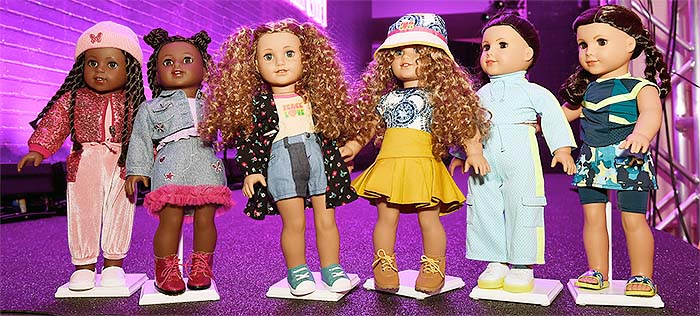
However, recent developments suggest AG’s contemporary lines, especially Girl of the Year (GOTY) and World by Us (WBU) are hurting the brand’s image and gravitas, not helping it. The choices made for these lines are not telling girls, “You’re a part of history, too,” as the Just Like You tagline put it. Instead, GOTY and WBU are telling modern girls, history doesn’t matter. They are making history from scratch. While the idea of girls and women making history is great in itself, the way AG presents it has plenty of holes. Those holes have made the contemporary lines, and American Girl as a whole, look stale, repetitive, and out of touch.
Adventure Replaced With First-World Problems
The first problem with AG’s contemporary lines is, they seek to make contemporary girls a part of history. Yet, no real “history” exists, and thus, no coming-of-age opportunities exist. As journalist Alexandra Petri wrote in her opinion column for Oregon Live, “Sure, maybe you picked your first American Girl because she resembled you–but the whole idea was to give girls an entry point to history. [In the] important times past, there were girls who were Almost, But Not Quite Like You.” Petri goes on to write, “People…use [dolls, action figures, and stuffed animals] to navigate miniature worlds. Limiting the canonical adventures to the present-day, first-world problems of Little Girls Who are Just Like You is a mistake.”
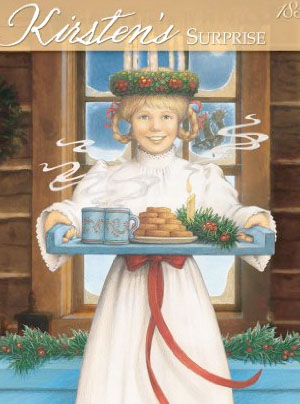
This might seem harsh and arbitrary. After all, Petri is an adult who doesn’t play with American Girl dolls or read their books the way a target audience member would. But the further Petri goes into her thesis, the more justifiable her argument is. She hones in on past heroines like Kirsten and Addy, writing, “Kirsten was adventure itself. At one point in her story, someone dies of cholera…she has to tangle with winter and rough conditions.” Petri describes Addy and Momma’s journey North from slavery as “terrifying,” but focuses on how they “hold to their dream that…one day, their family will be together in freedom.”
“Contrast that with what Saige is facing,” Petri writes of Saige Copeland, GOTY 2013. “Her school made the choice to cut art classes, which means she’s lost her favorite subject…Can she ride Picasso in the parade and make grandma [sic] proud? Can she raise enough money to protect the school?” As Petri puts it, “Oh, no, not the arts budget! That’s like World War II and slavery rolled into one!”
Or, as Petri also points out, contrast any historical American Girl, particularly the first generation, with McKenna Brooks, GOTY 2012. “Just as she begins to shine in school, McKenna is sidelined with a gymnastics injury…[can she] springboard to success again?” Petri goes on to note that with choices like these–choices based more on “marketing” than what girls need from books and dolls–American Girl has shifted its focus into “shaping [characters] in our image.” A Girl of the Year like McKenna or Saige “will have no more adventure than is readily available to you….No more trekking across the prairie or dealing with wartime rationing.” It’s much easier and safer for a 9-12-year-old girl to imagine herself as part of “a spa day with Saige.”
Again, without careful analysis, Petri’s opinion might sound snarky or misguided. It’s not as if contemporary adults can expect the girls in our lives to go through frontier expansion, war, or heaven forbid, slavery. Those experiences either don’t exist in the modern U.S., or exist in forms inaccessible and age-inappropriate for AG’s audience (e.g., human trafficking, the life of a girl caught in the wars of the Middle East). However, Petri’s point is not that certain types of adventures must be replicated, to show girls how to navigate challenges. Her point is, the GOTY line has done away with challenges altogether.
Rest in Peace, Revolutionary Plots
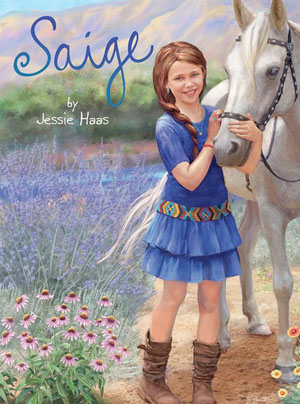
True, having a beloved grandparent injured in an accident as Saige does, or being bullied constantly as Chrissa (GOTY 2009) is, are big challenges for 21st-century girls. But as GOTY books show and Petri argues, those challenges are diluted. They are either secondary to a problem that focuses on the heroine, and her only (e.g., slashing the arts budget), or given the wrong focus points (Chrissa is bullied throughout her book Chrissa Stands Strong, to the point of it being a defining trait. But her brother, not Chrissa, is the one the bullying literally hurts most. Meanwhile, Chrissa’s friend Gwen, a fellow target, is made a pity object and stereotype of someone homeless–shy, awkward, and poorly dressed).
These poorly written challenges don’t let girls explore timely issues in any depth, nor do they make those issues evergreen. Chrissa, McKenna, Saige, and other GOTYs end up looking like the over-privileged, materialistic protagonists American Girl always sought to avoid creating. Their adventures feel, as Petri puts it, “like walking around in a life vest.” Even most of the GOTY names are what Petri calls “silly.” For instance, “Sage” is a popular name for a girl right now, and was in 2013. But spelling it with an “i” is less common, and would put a girl with that spelling in the position of having to explain. Isabel and Nicki both have counterparts in the GOTY line, with the same names, no less. This makes the Hoffman girls’ identities seem too contemporary and “stolen.” Kailey, Lainie, and Kanani almost sound like clones. Overall, these heroines sound more like Barbies, created to be popular, than real “American girls.”
Even when girls are given “real” adventures to explore, such as “Braving the Lake,” they come with provisos. Such adventures only occur during American Girl’s “reader insert” books, where the character is not specified, simply called “you.” And again, they’re diluted; the reader insert from “Braving the Lake” supposedly faces her fear of water–yet is fine swimming in pools. Therefore, no real challenge or growth opportunity exists. As Petri writes, the biggest challenge for this type of book is that, “[the insert] has a golden retriever, but you’ve got a chocolate Lab!”

As The Atlantic’s Amy Schiller writes, “American Girls aren’t radical anymore.” Of course, according to Babbity Kate, they don’t need to be radical, to reach modern girls. These new girls were created for girls, “not you…adult. They don’t have to….[change] for you!” It’s a more than fair point. But what’s also “objectively true” is that in creating dolls that look just like their owners, books with no protagonists except reader inserts, and girls whose experiences are “bland” and “local,” American Girl is cheating new generations out of adventure, complexity, and critical thinking.
Repetitive Heroines and Insular Plotlines
If AG’s historical line became slightly repetitive in recent decades, its GOTY line has been repetitive almost from inception. The repetitiveness became evident as soon as the first 3-5 Girls of the Year were released. No two girls in the line are exactly alike. But every few years, the “new” Girl of the Year will echo a previous one in myriad ways. These echoes are found at surface level, such as in the girls’ appearances, or as with the historical line, their personalities and plots. Additionally, the plots tend toward the insular, affecting only the protagonist and her immediate sphere. They may hearken toward current, “grown-up” backdrop issues as the historical books did. However, the repetition of those issues can make GOTY books feel isolated and bland.
Save the [Insert Endangered Species Here]
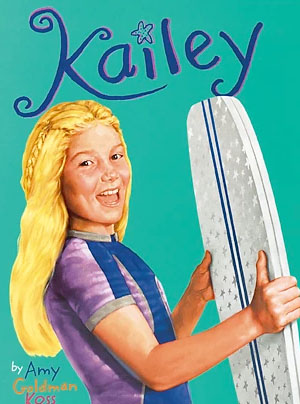
Kailey Hopkins, released in 2003, was a blonde, blue-eyed Californian with a passion for marine life. Kailey’s book focused on her efforts to save local tide pools from a new development’s construction. Seven years later, in 2010, Lainie Holland came along. Lainie is a hazel-eyed blonde from Cambridge, Massachusetts, whose main conflict seems to stem from enjoying nature at a level her family doesn’t share. Lainie’s book is also more focused on her being a “scientist” than an environmentalist. But Lainie’s second book focuses on her trying to stop an environmental injustice and facing “harsh truths” about nature and science, similar to what Kailey dealt with. Several readers commented on the similarities between the two girls, often negatively.
Girl of the Year kept up the specific “young environmental activist” plot repetition in 2011 with Kanani Akina. Kanani is not blonde, light-eyed, or even white; she is a multiracial Hawaiian girl. But her books focus, once again, on saving an endangered species, the harp seal. Therefore, a lot of appeal Kanani might have enjoyed was lost, since she debuted so soon after Kailey and Lainie (whose names not only sound similar to each other, but similar to Kanani’s, with short “a” and “i” sounds). Fans and critics alike panned Kanani all through 2011, saying her name was “ridiculous [and] hard to pronounce,” and that another “environmental” plotline was unnecessary.
Arts Are Cool, But Controversial
Between and after its spate of environmentally conscious heroines, Girl of the Year turned its attention to the arts–sort of. Mia St. Clair, released in 2008, debuted as a hockey-loving girl, the only female in a family of several older brothers. As it happened though, Mia wanted to spend more time on ice-skating. The conflict of her books revolved around “adjusting to the new skating style” of figure-skating, which she hadn’t tried much before, and being perceived as too frilly or girly for spending less time on hockey. The stated goal of Mia’s books was to teach girls that they should “do what they [wanted] to do, even if someone is teasing them, hurting them, or disagreeing.”
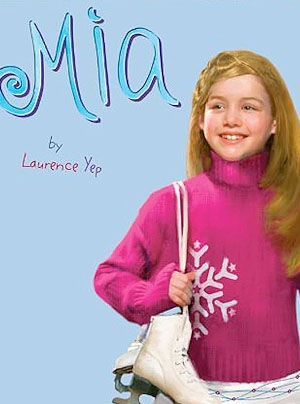
This could have been a great lesson and a great plug for fine arts and associated sports. But because of the privileging of hockey, Mia’s perceived lack of skating talent, and overall heavy-handedness, the message flopped. Moreover, Mia’s “determination” to do what she wanted even if she or others got hurt, can read as immature and selfish. In light of Chrissa’s release the next year, it can also read as a reason bullies should be given passes (if a girl is determined enough, bullies won’t bother her).
The arts and girls who love them got slammed and trapped in repetitive plots at least twice in the New Tens, too. As noted, Saige Copeland was released in 2013, and her entire plot arc revolves around saving her school’s budget for art and music classes. Nothing is outright stated, but it is heavily implied that these classes have been cut so students can spend more time on science, math, and secondarily, English/language arts (a humanities subject more closely tied to the arts). Saige spends a lot of time angsting about how to get her favorite art class back, but uses horseback riding as a major conduit to communicate her message. The parade she rides in does showcase her artistic talents, but those seem secondary. Fans noted this with chagrin. Additionally, they noted that Saige, a blue-eyed redhead, looked almost identical to strawberry blonde Mia, and had a suspiciously similar plot.
The arts fared a bit better the next year, with the release of Isabelle Palmer, a dancer recently accepted into a prestigious dance school. The fact that most of Isabelle’s curriculum focused on her artistic talent and her place in the school was never in danger, gave her plot a bit more originality. Yet the tension Isabelle experiences between ballet and modern dance is written in an eerily similar way to Mia’s choice between hockey and skating.
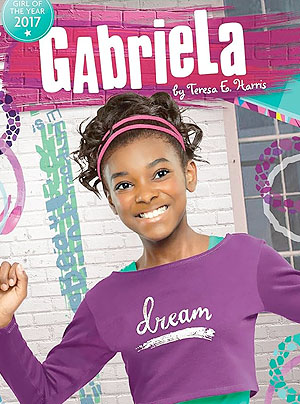
More importantly, when Gabriela McBride was released three years later, her plots concerned her choice between focusing on dance vs. spoken word poetry. In addition, Gabriela was central to a “save the arts” plot, with the arts center where her mother worked in danger of being demolished. The fact that Gabriela, a Black GOTY, had a rushed release and replaced blonde-haired, blue-eyed Tenney, a country singer, made her background controversial and downright damning for adult fans.
Encouragement of Isolation and Insulation
In fact, Gabriela is arguably the most “repetitive” girl of the year in many ways. Her plot echoes that of 2005 Girl of the Year Marisol Luna almost beat for beat. Gabriela is Black; Marisol is Latina. Both girls live in the inner city. Both girls face gentrification of their neighborhoods. Both girls express artistic talent through dance. Both even have beloved cats.
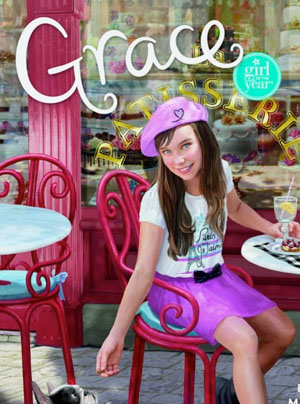
Such repetition continues in many ways throughout the GOTY line. For instance, both Gabriela and Joss have disabilities (a stutter and hearing loss, respectively), and were released three years apart. Lea Clark and Kira Bailey, released five years apart, were both animal-lovers spending much of their books in foreign locales (and saving endangered animals again). Grace Thomas and Blaire Wilson, released four years apart, were both gifted in culinary arts and had books that focused on themes like farm-to-table and sustainable food prep practices. Most recently, 2024’s upcoming GOTY Lila Monetti is said to be facing a choice between gymnastics and horseback riding. The mentor who will help her through this is a grown-up GOTY, McKenna Brooks, released in 2012.
One could argue this repetition is positive and necessary. After all, today’s girls are all living in the same time period. If they’re going to relate to fictional heroines, and AG is going to lean into “contemporary history,” then fictional protagonists should face issues to which their readers can relate. Heightened awareness of issues like bullying, “invisible” disabilities like hearing loss, girls in STEM, and girls in sports, mean AG’s readers are likely living experiences similar to the ones in their favorite protagonists’ books every day.
Additionally, the insular turn the U.S. has taken since the COVID-19 pandemic means that AG readers’ worlds are simultaneously bigger and smaller than in the past. They’re bigger because these girls can now learn about anyone and anything online, and communicate with anyone they choose. But these girls’ worlds are smaller because many of them lost in-person interaction and socialization for over two years. Their entertainment is more likely to come from a phone or tablet than reading, biking, or even playing with dolls. Extracurricular activities, too, may be hybrid or completely online. And while email, texting, and FaceTime are great, they aren’t substitutes for in-person interaction with people of different backgrounds. Thus, girls who read GOTY books in search of relatable fictional friends and events, are arguably losing out on learning how big the world is and how it can and should look for them.
An Agenda-Driven “World By Us”
American Girl seems to have noticed these issues with Girl of the Year and attempted to respond. Their most current contemporary line, launched in 2021, is more a mini-line so far, with just three protagonists. World By Us (WBU) reads as a direct response to the pandemic, systemic racism, undocumented immigration, and some of the national and world issues girls today face. Thus, WBU could bring much-needed maturity and gravitas to American Girl’s contemporary protagonists and narratives. Currently though, the WBU line in particular has fed into some Girl of the Year controversies, making said controversies repetitive. It also comes across as wholly agenda-driven.
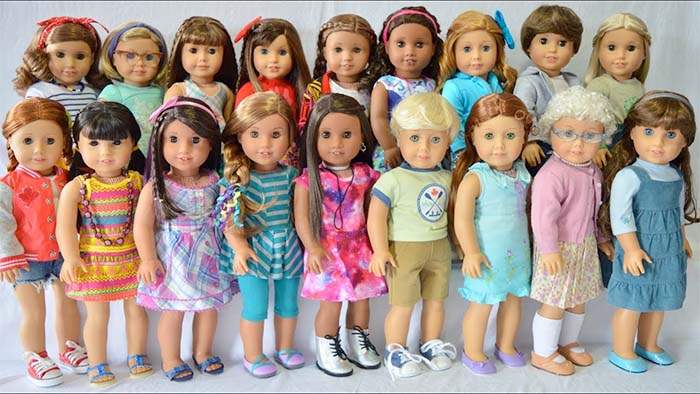
Constant Controversy, Often Color-Driven
World by Us hosts three heroines, Makena Cook-Williams, Evette Peters, and Maritza Ochoa. They are Black, multiracial, and Latina, respectively, and face coming-of-age challenges related to their backgrounds and cultures. Budding fashion designer Makena goes viral after channeling her talents into coping with the trauma of racial microaggressions. Evette grapples with how to balance relations with the Black and white branches of her family (Black mom, white dad). Maritza, who is an American citizen of Bolivian and Mexican heritage, uses her soccer talent to help spread awareness of the challenges undocumented immigrants like her friend and teammate Violeta face. The three girls are “best friends” and make crossover appearances in each other’s books. They help each other deal with the “big” current events each one focuses on, and cheer each other on in “smaller” pursuits, such as Makena’s fashion blog and Evette’s dedication to environmentalism.
At face value then, WBU should be the least controversial line American Girl has launched. Unfortunately though, controversy has plagued the WBU girls from launch onward. As with the historical line and Girl of the Year, much of this controversy relates to the races and colors of fictional girls and how these are portrayed. Thus, the WBU controversies feed into those that exist in other lines. For example, Evette is controversial because she is multiracial, but half of her heritage is white, and her hair reads blonde. She has a dark skin tone in her book’s illustrations, and her hair is textured, curly, and brownish or caramel, not 100% blonde. But Evette’s doll is light-skinned, and her hair is highlighted in a way that gold or blonde are the dominant colors. Thus, fans commonly pan Evette and claim she is yet another capitulation to AG’s “favored” white, blue-eyed blonde archetype (see Kirsten, Kit, Caroline, and several others). They use controversies like the one surrounding Gabriela McBride’s creation–essentially, as a last-minute replacement for blonde, blue-eyed Tenney Grant–to back up their position.
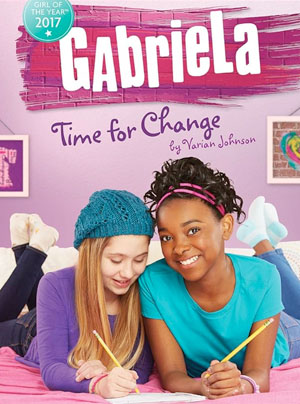
The sheer number of blue- or light-eyed, blonde or strawberry blonde dolls in the AG canon indicates these fans have a point. And whether or not Gabriela or Tenney was the “better” Girl of the Year for 2017, Gabriela’s creation and release were patronizing pandering to fans who were justifiably skeptical of the blonde-and-blue glut.
At the same time, panning Evette because her background and appearance is portrayed a certain way, feels racist in itself. It’s as if Evette is not “of enough color” to count in the women of color community, or that she is defined by race, rather than identifying with and celebrating it on her own terms. Couple this with Evette’s core interest, the environment, and she reads as yet another tired retread of Kailey, Lainie, and Kanani. Evette more than the other two seems created to further a controversy-driven agenda. She seems to exist only because American Girl fears getting “cancelled.”
Makena Cook-Williams falls into a similar trap. From the moment of her release, fans complained her name was too similar to McKenna Brooks’. Again, with a name like Makena Cook-Williams, they have a point. But Makena is actually pronounced (Ma-KEEN-uh), and is a Swahili and Kiyuku name meaning “the happy one.” Still, Makena’s African heritage and her pride in it are eclipsed by similarities to a white, red-haired protagonist, similarities that arguably never existed. Additionally, there has been some controversy over Makena’s wig and eye colors being changed in certain doll models, or the use of particular face molds for her doll. As with Evette, some fans feel this is racist, either because Makena’s face mold has been used for white dolls and “overused,” or because as with Evette, race is becoming Makena’s defining trait.
It seems Maritza is the only WBU doll not to face racial controversy as such. However, the video version of her story has received backlash, because a major plot point was changed or “erased.” Specifically, in Maritza’s book Lead With Your Heart, her uncle is arrested for being undocumented. Maritza then participates in raising money for his legal fees. In the video though, Maritza’s uncle is simply sick and unable to work. This would be a significant issue for an undocumented immigrant, but is not as serious or “deep” as getting arrested and possibly facing deportation. In addition to being “erased,” then, some fans feel Maritza’s main conflict was watered down. There is conjecture that this happened so the video could be shown on YouTube Kids. But considering YouTube Kids has come under fire for posting not only controversial, but frightening and dangerous content (e.g., Huggy Wuggy, Momo), the argument holds no weight.
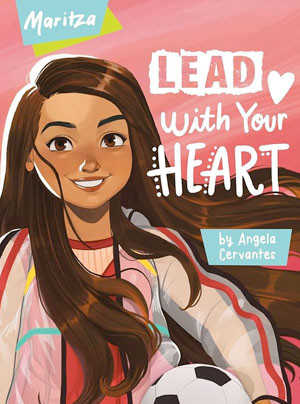
It is more likely that Maritza is controversial because she arguably shows, more than the other two girls, that American Girl is not afraid to “get political.” This does, however, point back to Maritza’s race. That is, most undocumented immigrants are perceived to be Latino/a and Brown. The underlying, incorrect assumption from Maritza’s detractors is that if she were white, immigration would not affect her in any way. Thus, she would not care about it, or any other current issue that did not directly influence her.
Tokenized Diversity and Preachy Plots
The irony here is, World by Us was created to dispel such assumptions and arguments. Several news outlets and popular blogs have highlighted WBU as [“taking] diversity to the next level,” and [“promoting] unity and equality.” An AG spokesperson recently told PopSugar the WBU line was created “to accelerate our progress in diversifying our characters and stories.” These are all great, necessary goals. For their part, Makena, Evette, and Maritza do reflect “what it’s like to be an American girl today.” Unfortunately, AG seems more focused on the “acceleration” part of their diversity than creating fully realized heroines from complete worlds.
In contrast to complaints about the WBU girls’ skin tones, hairstyles, and names, this problem is more an undercurrent, meaning there is nothing wrong with the WBU books themselves. In fact, with plots focused on racial microaggressions, undocumented immigration, and pandemic lockdowns, the WBU books come as close to the series’ original gravitas as any books have. But where the historical books placed girlhood in the “foreground” of far-reaching events, WBU tends to let the “grown-up background” eclipse the girl in the foreground.
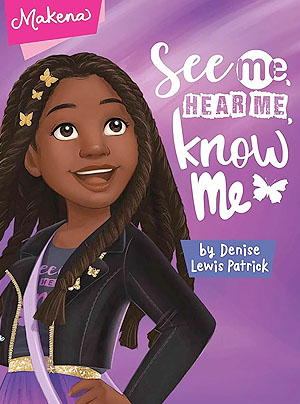
This is apparent from the line’s first book, Makena’s Hear Me, Know Me. Makena and her younger siblings are traumatized when a new white neighbor sees them coming home after school and assumes they’re breaking into their own house. The police are called, and while their actions are age-appropriate for the audience, they are stern enough with the kids to shake everyone up. Racial assumptions are made, and Makena recognizes for the first time, her race can make her a target for prejudice in 21st-century America. In response, she uses her fashion blog MakenaShines to express who she is and why she should be heard.
Makena’s trauma is “resolved” to a point. The white neighbor apologizes for calling the police and makes clear she’d like to be friendly with the Cook-Williams family. Makena also recognizes being known and heard encompasses letting people see the things she loves, that she had hidden before. At the same time, the book’s dialogue makes clear the neighbor’s apology didn’t solve microaggressions as a whole. The underlying message becomes, “Apologies from one person, for an unintentional microaggression, don’t matter because/as long as, any form of racism exists.” In line with that, when Makena tries to be known and heard, she often switches her focus from what she loves and what brings her joy, to what she dislikes or what upsets her. She begins to read as “on a soapbox,” or as if her family is inadequate to help her heal from trauma.
Evette and Maritza, too, have passions and dreams outside of the “current events” in their books. Evette cares for the environment more than any contemporary character since Kira Bailey, and arguably in a more effective way. Maritza dreams of playing professional soccer and makes strides toward developing her talent, which like Makena, she maintains focus on. But like Makena, Evette and Maritza read as secondary to the “issues” of their books.
Evette’s determination to “heal” a polluted river turns into a plan to heal the rifts in her family–something it becomes clear, a girl her age can’t and shouldn’t do by herself. Maritza wants her fundraiser to succeed because she loves her uncle, a noble and wholly relatable motivation. But she gets tripped up by her emotions and the rhetoric surrounding immigration. That is, she tries to deal with as much of that rhetoric and as many nuances as she can, although doing so reads as too much for a ten-year-old girl. Sometimes, Maritza also seems more upset that people would question her identity as an American citizen, than she is about her uncle or friend Violeta’s more precarious situations.
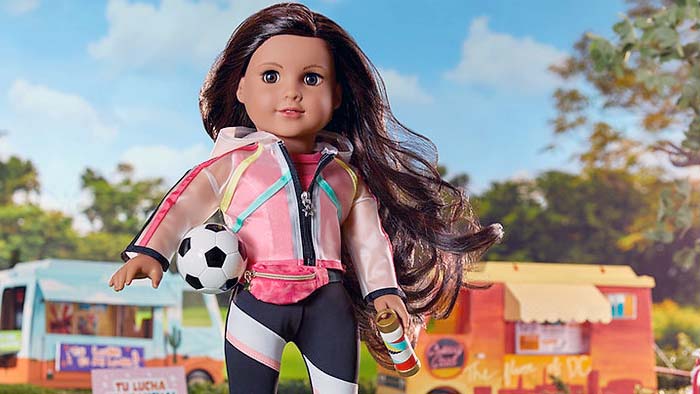
The plots of World by Us then, read as so preachy and issue-driven, the girls themselves become cardboard. They are not fully realized; they are two-dimensional mouthpieces for what their adult authors want to say. At times, it reads as if Makena, Evette, and Maritza are trying to teach their readers how and what to think about specific issues. The line has been accused of being a mouthpiece for the “radical left.” How true this is depends on who you ask; as Kate of Babbity Kate put it, the historical line “was super-conservative and outdated” at its inception.
But no matter which side of the political aisle a fan comes from, it’s hard not to see the WBU books as more issue-driven than plot- or character-driven. Therefore, the heroines come across as tokens defined by race, origin, or family experiences rather than who they are as individuals. And since by their nature, current issues change every day, WBU’s issues and stories may soon become as dated as the earliest historical line.
How American Girl Will Get Gravitas Back
With all these “mixed bag” developments and outright failures, it might seem as if American Girl will never be the child-friendly, yet dignified haven for girls and their dolls that it once was. Indeed, time can only go forward. Elements of American Girl exist that current fans and the girls in their lives will never get back or be able to experience. Conversely, many of AG’s most recent developments are positive, or would have been with better handling. The question becomes not how to “restore” or “resurrect” American Girl, not how to create a “better” one, but how to bring dignity and seriousness back to what exists. Adult fans and current readers may not enact such big changes themselves. However, a few key ideas might help American Girl recoup its place in history and the present, rather than being a line that says, “That’s history. We’re past that.”
A Few Crucial Resurrections
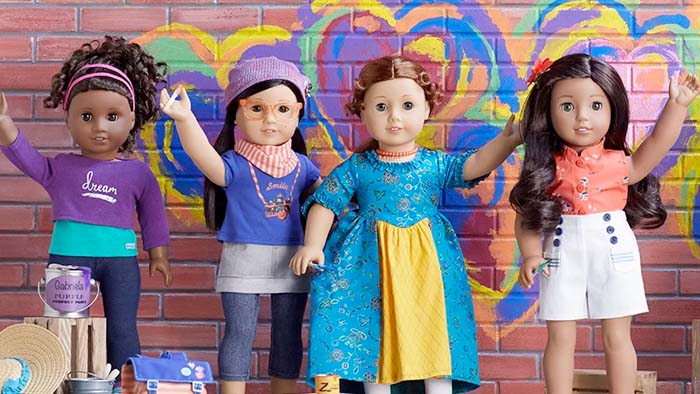
Not everything about the “old” or “classic” American Girl can or should be resurrected. It would be unrealistic to re-release every original historical doll’s entire collection. In the current economic age, doing so would feed the idea that AG has become “for rich girls only.” It’s also true that some elements, such as American Girls’ original historical book designs and silhouette icons for the girls, no longer engage the target audience as they once did. All this said though, revamps and additions like the Best Friends and BeForever lines have shown adult fans and perhaps today’s target audience members what could work if resurrected.
The first element American Girl should resurrect is the six-book format. With the invention of e-readers, books are cheaper and easier to access than ever. Services like Kindle Unlimited and free or reduced audiobooks mean a girl could even get her favorite protagonist’s entire series for free. Also, the books would not have to go back to the original Meet-Lesson-Christmas, and so on format. Each series could remain true to the girls, periods, and cultures where they are centered. But the abridged historical books and short, “easy to digest” contemporary books available now do not provide the challenge, nor the hours of learning and entertainment, the original six-book series did.
If a six-book series is not possible, a historical heroine’s series should be split into two books of three complete and continuous, not abridged, stories. A contemporary heroine should get three books, minimum. These would not have to focus on specific holiday, birthday, or “season” stories, but should focus on whichever events, seasons, or milestones are most important for that girl.
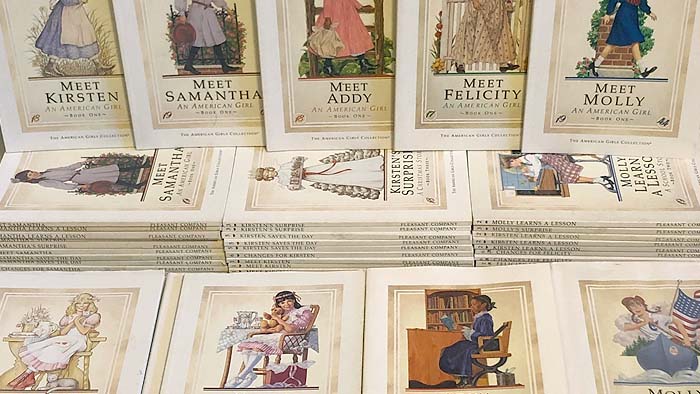
American Girl should go on to resurrect historically accurate period outfits and accessories for their dolls, either in abridged collections or as new but more accurate items. As Babbily Kate, Dream Studios, and other AG devotees of YouTube note, the outfits and items associated with the BeForever line are often anachronistic. Their color schemes were conceived with modern girls in mind, not actual historical protagonists. Their quality has deteriorated while their prices have stayed sometimes impossibly high. However, releasing every item and outfit for every girl in a historical and contemporary line of over 36 characters is unrealistic.
Instead, today’s girls should have the option to purchase a “main” outfit from the book series, such as a Meet outfit. She could then go on to purchase accessories related to events like holidays and birthdays, as well as iconic or popular items from collections as whole entities. Pets, for instance, would always be available. However, certain “smaller” items from the stories, or items showcasing a hobby that is not a protagonist’s main interest, might not be.
Finally, American Girl should resurrect the idea of, as Babbity Kate says, “one doll that is your girl, your doll.” Kate points out that in the print catalog and AG’s early promotional materials, one never saw a girl playing with “an army” of AG dolls. The implication was, the girl on the material had one treasured doll, and any girl with her would have a different one. These photos pointed to deep friendship, a culture of sharing, and a culture where a girl didn’t have to have everything, or relate to every character, to feel part of the brand.
This is not to say today’s girls should not be allowed to collect American Girl dolls or identify with more than one doll. However, the explosion of characters means this generation is not taking time to slow down and find the heroine they identify with most and want to learn the most about. American Girl should take steps to bring this opportunity back. Ways to do so include an in-depth “Which American Girl Are You” quiz, the resurrection of the Internet’s historical American Girl Virtual Museum, and the resurrection of Internet games that focus on historical characters while also teaching lessons or skills.
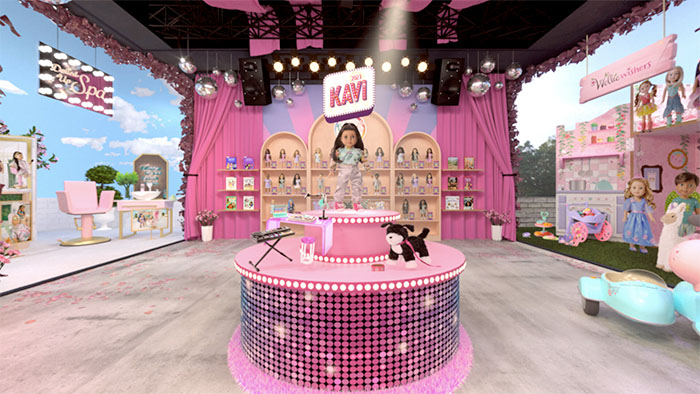
For example, Molly once had a typing game wherein players could level up for faster and more accurate typing. Addy once had an online version of a period game called mancala. Felicity, Samantha, Molly, and Kit were also once featured in a historical mystery game with many parts, called Mystery of the True Heart. Bringing these and more back would heighten girls’ curiosity again, give them fun, interactive, and free games to try, and help them see history as relevant and intriguing.
Increased Research with a Broader Focus
American Girl should devote more time to research for both their historical and contemporary lines. They have already proven they can hit history’s “high points,” such as the Revolutionary War, Civil War, World War II, and more. They have also proven their authors and historians are interested in and committed to lesser-known historical periods and events, such as the entry of New Mexico and California into the U.S., the 1850s yellow fever epidemic, and the “quiet” 1950s. However, their treatment of lesser-known subjects has been hit or miss thus far.
In terms of the historical line, American Girl could focus more broadly on lesser-known or less popular historical periods and events. Instead of focusing on one decade, AG should look at quarter-, half-, or full centuries when creating new characters. Their historians should ask, “Which events have we never covered, or which identities could bring freshness to a period we have covered?”
For instance, Josefina and Kirsten, a white and Latina girl, are considered the line’s “frontier girls.” However, readers have not yet met a First Nations girl living anywhere between the 1850s and 1890s, who is centered as a “main” American Girl. Perhaps a heroine living in 1849 California is a Chinese girl experiencing the Gold Rush while her father or brothers work on the new railroads. Perhaps a “main” Irish American Girl (not a “best friend”; see Nellie), is a potato famine survivor. Or perhaps she is a second-generation immigrant living in New York City, and her friendship with an Italian or Jewish girl brings to light the period’s ethnic and religious tensions.
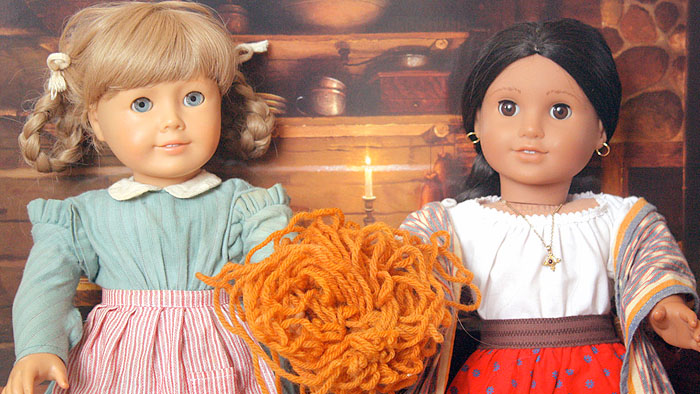
American Girl should do something similar with the more current events of their contemporary line. The nods to technological trends, small businesses, farm-to-table food, and girls in STEM, among other issues, can and should still exist. But they should exist in the foreground while a protagonist comes of age thanks to a “larger” recent event. Take, for example, Nicki Hoffman’s fear of the Y2K bug, which is “nodded at” but not quite explored in her books. Perhaps a Girl of the Year could enjoy technology, which she uses for fun but also needs because she is living overseas in a military family, or is a top student in a STEM school.
But, this girl is also frightened of technology. Perhaps she accidentally fell for an Internet scam and ran up bills that still affect her financially strapped family. Perhaps someone an older sibling or cousin met on the Internet tricked or accosted them, and help almost didn’t come in time. On top of such trauma, the heroine could be frightened because of rumors about AI she’s heard at school or on social media. Navigating a mix of love and fear, passion and trauma, would force the fictional girl and her real readers to do some critical thinking about topics like technology, trauma, communication, and more.
More Nuanced Diversity
American Girl has no shortage of diverse characters, but their choice to patronize and preach has unfortunately made diversity look like a “soapbox” issue that affects only certain groups. To avoid this in the future, American Girl should create their diverse characters with much more nuance. That is, issues that mainly affect certain groups should absolutely come up and be discussed. Yet, a better balance should exist between the difficulties of being “different,” and the joy that comes with taking pride in one’s identity, culture, and experiences.
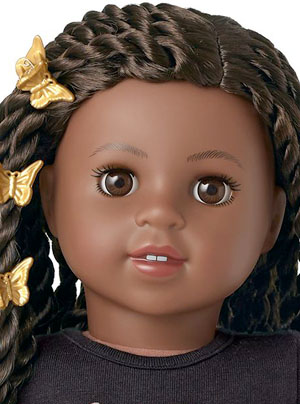
For instance, a Black protagonist can experience microaggressions as Makena does. But unlike Makena, she should heal from trauma in a realistic way. She should tie the racism she has experienced to history, not only in general but of her community or family, and focus on how her response will move the people she loves forward in positive ways. Friends of all races and cultures should be allowed to help her heal, speak to how their perspectives have altered, and have positive impacts on how she views her world. The protagonist should have moments wherein her trauma or negative feelings facilitate extra love, support, or deep feelings of victory and resilience.
The same can be said for “invisible” diversity, such as diversity found through national origins, religious faith, and some forms of disability. In the past, American Girl has not handled these diversities well; they have been eclipsed or erased, creating a problem almost opposite of the ones visible diversities have faced. In the future, AG’s writers and consultants should take time to explore in depth how these invisible or less visible diversities affect today’s girls. For instance, their authors shouldn’t be afraid to tackle disability outside of ableism or the protagonist’s self-consciousness. Nor should they be afraid to delve into what disability entails, in age-appropriate ways.
For instance, the prevalence of online information now means abled people are more aware of rare or complex disabilities than in the past. Therefore, creating a “main” American Girl with something like cerebral palsy, juvenile rheumatoid arthritis, or Charcot-Marie Tooth Disease, would be a good move. Also, increased awareness of girls with autism and ADHD, as well as the lack of support these girls face, means creating such an American Girl would help her real affected readers feel acknowledged and supported. As with racism, when and if such protagonists experience ableism, it should come with a backdrop of resilience and victory. As with race, a disabled protagonist should not have disability as her only or main trait. Yet, she should be allowed to identify as disabled, define herself with disability as she chooses, and take pride in that identity.
Finally, American Girl might consider tackling more religious diversity as part of a more nuanced approach. No new American Girl’s religion should feel “privileged” over someone else’s, and discussion of complex concepts is not necessary. However, American Girl should take steps to rectify its “crisis of faith.” The brand might consider bringing in Jewish girls from other eras, or a contemporary Jewish girl with direct ties to Israel. Similarly, they might create a historical or contemporary Muslim girl; the brand has received backlash for creating, then shelving, a protagonist named Fahari.
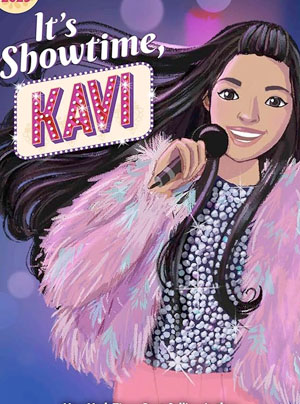
The brand should also consider creating protagonists, especially dolls of color, whose religion directly influences how they express culture, race, or origin. Girl of the Year has touched on this with current heroine Kavi, who celebrates Diwali in one story. Still, more protagonists with Hindu, Buddhist, or Muslim heritage would not go amiss. It might even be possible to create a heroine who practices some form of animistic religion.
Lastly, if American Girl wants to deal with its “crisis of faith” head-on, and wants to create more Christian characters, they should create ones who actually practice Christianity. American Girl has, for example, never created a practicing Catholic. Nor have they created devout Protestants. They have shown historical heroines, particularly Addy and Kirsten, attending church or seeing their parents praying. However, they have not had a Protestant heroine of any denomination deal directly with her faith. The brand might well consider delving more into interfaith protagonists as well, or protagonists from lesser-known denominations such as Pentecostal or Mennonite.
Complex Worlds for Historical and Contemporary Characters
The last and perhaps best step American Girl should take to resurrect gravitas lies in creating complex worlds for all its characters. Granted, some of the complexity of previous heroines has fallen out of favor. Parents and guardians tend to worry that experiencing an American Girl’s complexity means owning as much of an expensive collection as possible. However, by no means does “complexity” have to mean “expense” or “materialism.”
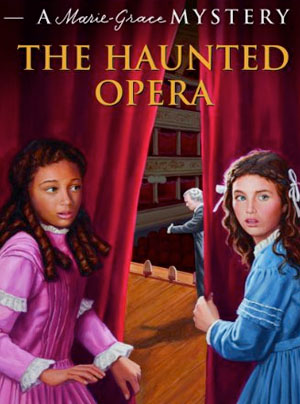
Instead, when we say an American Girl of any line should have a complex world, we mean different facets and nuances of that world should be explored throughout the books and the way she is played with. For example, Kirsten’s world was nuanced through her books because there was so much to unpack about “Larson family values” and how prairie life differed from life in the 20th and 21st centuries. Cecile and Marie-Grace’s world was similarly nuanced because their books had a lot to unpack about interracial friendships, what it meant to be “American” in a city like 1850s New Orleans where the word could almost be an insult, and how non-traditional families made the 1850s work for them.
Future dolls and collections can reflect this nuance if books’ authors are willing to delve deeper than they have in recent decades. For instance, historical and especially contemporary books should bring back the “Family and Friends” section that was once on the front pages of every AG book. Characters like parents, guardians, and siblings should have thoughts, feelings, and struggles of their own as reflected through dialogue and how they relate to the heroine. Best friends should have something in common with the “main” heroine, but be realized enough that the narrative does not become something like, “I’m white and my best friend is Chinese” or “I’m wealthy and my best friend isn’t” a la Julie and Ivy or Samantha and Nellie.
As for collections, it is no longer necessary or advisable to create a “complex world” through literally hundreds of accessories. As noted though, a few key outfits and accessories would not go amiss. Additionally, a “complex world” could have an online component, such as a virtual world girls could explore and in some cases, add to (e.g., using online “game money” like coins to dress a contemporary or historical avatar rather than purchasing outfits). A “complex world” could involve a contemporary character for whom real girls craft their own storylines, perhaps through tutorials or workshops given by established authors, similar to the blank books that once came with the Just Like You dolls.
Conclusion: Creating a Truly Timeless American Girl
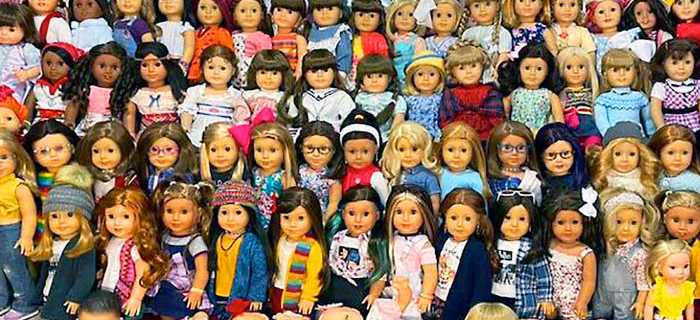
American Girl has been “an institution” since its first inception almost 40 years ago. In those decades, the brand and the beloved characters inside it gave real girls “windows in time” through which to experience the past and future in complex ways. These “windows,” the dignity and gravitas inherent in them, ensured real girls could learn to think critically and take to heart timeless lessons about what “being a girl” really means, no matter what era one is from.
Unfortunately, much of that gravitas and dignity has been lost in a glut of materialism, controversy, forgotten characters, and new characters who sometimes seem interchangeable. However, this does not mean the “real” American Girl is dead or that the future of the brand is hopeless. Rather, the changes American Girl has undergone signal it’s time for grown girls to use the critical thinking skills they learned from their beloved heroines. They should unite the best of the brand’s past with the best of the present and future. Then they can pass a complex, nuanced, and quality experience to the girls growing up around them, and see that experience continue for decades to come.
What do you think? Leave a comment.


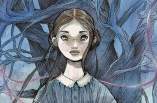

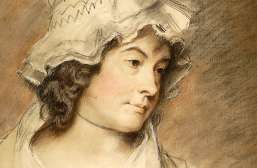
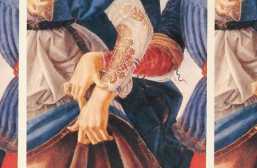
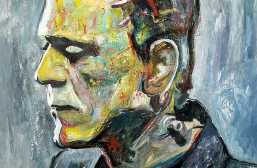
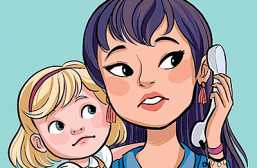


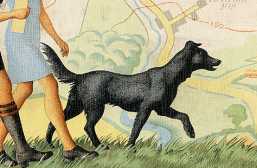
Yikes.
This was clearly a passion project of the writer but could have used better editing. The criticisms were confusing and some made no sense such as Nanea and Claudie being released near each other?
Super confusing and hard to understand or process. Way too long.
Great article! It was a pleasure to edit, and I love how in-depth you go into the topic, so that we get a clear idea of where you’re coming from with your points. I’m glad this article is live on the site! Great work!
Barbie VS American Doll? What do you people say?
Barbie and American Girl have different appeals, different price points, and focus on dolls of different ages. They’re apples and oranges.
I think I liked the American Girl magazine and non-fiction books better than the (expensive!) dolls or their historical novellas. The magazine was great and very ‘wholesome,’ focusing on activities, recipes, games, money-making ideas, and craft projects for girls that were actually interesting, inexpensive, and within a child’s (and her parent’s) capabilities. Occasionally they would run an article on hairstyles, but usually, the focus was on what girls can do, not what girls can look like.
There were non-fiction books about being and finding a good friend, paying attention to your emotional and physical health, sprucing up your room with inexpensive objects, throwing seasonal parties, etc. and books with craft projects, advice for unusual situations, etc.
They may have changed since I was girl (longer ago than I’d care to think about), but I loved them at the time, and my sister loved them, too.
totally agree. why cant uk girls get magazines of this quality instead of the usual boy band and make up tat.
Don’t get me wrong, I enjoyed all those other things as a child, but Barbie is as versatile and as fun as any of those things. I’ve never been a clothes and make-up girl, but I still loved my Barbies. If you can’t have fun with a Barbie, you probably lack imagination!
My granddaughter loves American Girl dolls and I’ve always tried to give her “ethnic” looking dolls that look like her. But like most little black girls, she has dolls of all ethnicities and she really doesn’t place any importance on it. I do, however, because I think it’s not a good way to grow a healthy identity when young minority children don’t see themselves at all in popular culture.
I had a pair of twin black dolls as a child that had belonged to my mother so they would have been able 30 years old or so. I wasn’t hugely into dolls but they were super cute. Wonder what happened to them.
I had a few Black dolls, but looking back, wish I had a more varied collection. IMHO, the Black and ethnic versions of dolls (e.g., Barbies) are generally prettier and more detailed than their white counterparts. Plus, I remember always feeling a little annoyed that most white dolls were blue-eyed and blonde, which I am not (hazel-eyed, auburn/brown).
I asked for (and received) a black doll when I was a child, even though it wasn’t part of my culture. The neighbour’s daughter, with whom I became friends, had one and when I asked why, out of curiosity more than anything, she explained that we were all the same under the skin and all deserving of the same love. Undoubtedly, it was something her parents had taught her, the language was very mature and adult for a 5-year-old, but the truth of it stuck with me—all of my life. It should have been self-evident, but it wasn’t. Those flip-dolls were around when I was a child, and I had always assumed that this same lesson was what they were meant to convey. A person who did not want impart such a lesson wouldn’t craft toys which bring out nurturing feelings in their child if they don’t want their child to love it.
There used to be a woman in the Africa centre in Covent garden who made black rag dolls. They were beautiful, had braids, some had locks. I bought my friends kid one, they were about £50. Unfortunately by the time my daughter was born and I wanted one for her, the lady making them had died. My daughter was lucky enough to have been able to enjoy the Bratz era, there were dolls who shared her tone of skin.
A mention of the influence of Sasha dolls would not go amiss here. They were designed to be inter-racial based out of Germany and androgynous in their features they were an attempt at making a non-specifically white or black doll thereby introducing children to a more acceptable cafe and colour. My girls had one each and while they had blonde or dark hair, they were our attempt as parents to de-colour their play toys. I must also say that I refused to allow my son guns in an attempt to stop the early programming of killing. Not sure either worked by then we were not taught to be parents – we learned on the job. 🙂
@mort: I had never heard of the Sasha dolls, but yes, they do sound intriguing and warrant discussion, especially in an era where the concepts of race and gender are timely, hot, and evolving.
My daughter’s best mate when she was eight was black and had a black Baby Born, whilst she had a white one. It was cute to see them playing interchangeably with the dolls.
As a child I tended only to like porcelain dolls or Barbie-type dolls. I liked dressing Barbies and brushing their hair. I think I had an awareness of sex quite young in life, maybe from too much inappropriate TV, and in wanting all my dolls to be beautiful I believe I was playing out a fantasy about how I would like to be. Although I often chose to play with Barbies at friends’ houses, I didn’t ask for one (and thus wasn’t given one) until I was around seven. By the time I made these choices I had already formed a view that this mode of femininity and beauty was aspirational.
While playing with dolls can be educational in the way the makers of these dolls suggest, they also prepare a girl for a lifetime of being looked at. I was picked on a lot because of my fair skin and red hair, all through my childhood and adolescence (and even now occasionally in adulthood). Having a couple – literally two – red-haired dolls, which I utterly cherished, helped me to appreciate that people who looked like me could be considered beautiful too. Imagine going through life believing your looks define you, and that you will never be considered attractive because you are ginger. I came close to that, and yet I can’t begin to understand what it must be like going through that because of your race.
I guess my point is that toys aren’t responsible for a child’s socialisation, people are, but if we are giving young girls objects that signify beauty and femininity (as in, the essence of being female) we should at least make sure they come in as wide a range as possible.
I had a ‘historical’ American Doll when I was 9 (we had been living in the states) – a Victorian girl called Samantha, my sister had a Swedish immigrant called Kirstin from the late 1880. I loved the accompanying books, which had little sections on the period’s history in the back and were often stories with a moral message. I loved the numerous outfits as well, but my parents didn’t pander to us that much.
I think there are far worse toys (i.e. Bratz, which make me die inside) and I always remember the facts i learnt from these books.
I used to have mini-me dolls. My mother often made clothes for them from the pieces of material left over from the clothes she had made for me. I suppose my dolls weren’t very pleased when I started sewing and knitting the little garments myself, but it certainly was very educational.
Oh, I love that idea! I own the original five large dolls but have entertained the idea of purchasing minis of the ones I never got.
I have always been terrified of dolls, American Girl dolls especially. My great aunt collected these and had a special room and displays for them.
I hear a lot of people feel that way about dolls. I never had that fear, probably because I played with them a lot and both my grandmas collected them. Thus, dolls were as commonplace as other furniture for me.
This said, I can definitely understand where the fear comes from. Doll design evolves and continues doing so all the time. Looking at some of the older ones I do think, “Why would an adult think any child would want to play with something that looks so haunting?” As for the newer ones, they can be a bit unsettling if a bunch are together (e.g., girls who play with AG now tend to collect a bunch. If you consider things like the similarity of the face molds, yeah, that could be creepy).
I never got a American Girl as a kid but I spent hours flipping through the catalog and trying to figure out what doll I’d get if I could. I’d sit around debating which ones hair would be more fun and stuff like that but Felicity, Kit, and Samantha were always my favorites. I watched the movies and read the books so many times and still pick them up at thrift stores for my nieces and little sisters. Someone gave my baby sister a handmedown Kit doll a few years ago and I was so jealous 😭😂
Oh, that’s lovely. 🙂 I grew up with the original 5-7, and liked them all for different reasons (Molly was the only one who wore glasses, Addy had the best plot and we both loved academics, Kirsten was my first, etc.) My mom especially loved Felicity and went ga-ga over her red hair.
I had grace and Samantha when I was younger I loved them so much but i don’t remember what happened to them sadly.
One time I got shipped a bunch of American girl doll clothes and I used them for my baby doll chocolate chip! That was an amazing year.
My daughter LOVES American Girl Dolls! And she looks just like her doll! Her Nana has a whole collection and she loves to go over there and play AGAIN dolls with her cousins!
I have a Samantha doll, my mom purchased her for me when I was around 10 years old. She chose her because we looked so similar. She was such a beautiful gift from my Mom.
I do welcome the idea of little girls (or boys) having a doll that is actually the same colour as them, if they so wish. I’m bloody sick of buying cards for my niece, who happens to be mixed race, that are so obviously covered in pictures of little white girls.
So lifelike but still uncanny. Beautiful dolls.
I’m so excited to see this article here! As someone who received six American Girl dolls in my childhood, I can understand why you’re so passionate about this subject. I especially appreciate your tracing of the impact and meaning of the earliest dolls all the way to the most recent offerings.
I loved these when I was little, though they didn’t have the customisable ones yet. The books series was great, and they always came with activities from the time period that you could do with your parents (and your doll, back when imagination stretched that far).
I like Monster High dolls better. Oh how I wish I could have had a robot doll and her gargoyle friend. I see them in the supermarket and think of all the years wasted on Ken dolls (no, Action Man is not for you young lady!). Ah well…
You can also buy an Australian Girl doll – different company, similar idea, Aussie girls. Yay!
When I was a lad my Action Man would often have romantic flings and occasionally ‘get it on’ with my sister’s Sindy doll (my Action Man had too much sense to go for a blonde American bimbo like Barbie).
I must confess, growing up in the states I had not one, but three American Girl dolls and I LOVED them. I had all the books, subscribed to the magazine and had some of the non-fiction books too.
I hope that if I am to have a daughter in the future, there is American Girl or similar around 🙂 No doubt she will also play with Barbies, cars, Lego and in the mud, but if she can enjoy American Girl and learn something like I did, I’d be pleased!
It’s just a shame that the high price tag on these POC dolls means that most black girls from from example Detroit won’t be able to afford one. The dolls will be predominantly owned by middle class white kids.
American Girl; Made in China by virtual slaves for pennies & sold in America to obese slobs for $100.
All the dolls look the same, with the same features, regardless of their plastic skin tone or ethnic group the supposedly depict. BUT they do have compelling storylines in their books, with worthy critism as brought forward in this great article.
Dolls now have back stories? Woot!
I thought they always did, like Barbie is married to Ken and things like that? On a related note, dolls freak me out. But then so do cats……..
This is nothing new. I read all of the American Girl books in 1994. I never had a doll as they were too expensive, but those books were the back stories of the dolls that the company was selling at that time.
My sister and I had a ‘topsy-turvy’ doll in the late ’50s. We were told is was Little Eva and Topsy from ‘Uncle Tom’s Cabin’. The doll may have been acquired when we lived in the South-Arkansas and Louisiana. Perhaps that was a simplistic explanation for a much darker interpretation.
Almost every girl, and at least one boy, I know between the age of 7 and 12 has an American Girl doll. The children cut across the racial and class divide. To a one, they love their doll. They get them at aged 7 and are still playing with them at age 12. They don’t do “tea parties”. Most of them have an “historical” doll and they have read the stories: the Swedish immigrant to Minneapolis, the southern depression-era girl, the 70s environmentalist from San Francisco, and a chunk more. The stories are somewhat watered down but aren’t rose-tinted either. While the dolls, clothing, furniture and accessories are not bargain-basement, they are of a pretty high quality. American Girl also offers a series of books designed for girls as they head into puberty. The books contain pretty decent, not conservative, advice on how their bodies will change, how to handle their feelings, how to manage money, how to babysit and how to deal with their parents’ divorce. Is that really all that bad? Also, are the dolls really any cheaper than nintendo, apple stuff, lego (a little bitter at just having shelled a small fortune on lego ninjago stuff)?
I can’t find any of Asian appearance. There are two ‘olive’ skinned ones but they’re no darker than white people on a mildly sunny day.
I only have like ten of these books, but my AG bookshelf is expanding! My favorites are the mysteries.
The books are good, so are the movies, you don’t have to buy the dolls. I like them for young girls more than the Barbies and the slutty looking bubble lipped Bratz dolls.
American Girl do brilliant books for girls. The dolls may be horrifically overpriced and a little bit scary looking, but their storybooks and growing-up advice books are lovely. I loved them when I was small anyway.
A decade ago I purchased a doll for an eight year old Black African girl from MyTwin — 90% resemblance. Would recommend over the American Girl Dolls who all look like each other other than hair, eye & skin color.
This little girl is now a grown up working artist & reminded me that her doll is one of a kind – which is the artist’s way.
I loved the books as a child in the ’90s, but a doll was out of the question. They have always been ridiculously overpriced for a children’s toy. I did spend a lot of time looking at the doll catalogue.
What mother wouldn’t chose a Melody over Barbie. One has a positive affirmative message, the other has a 17 inch waste and deformed feet.
Or father… they do exist!
I had a black doll as a kid in the 70s: it had been on sale in our local corner shop. This was in an ethnically undiverse part of the West of Scotland and there was no political purpose for me: I just thought she was cool and different. I still have her.
I had a black doll in the early 1960s, when there is no way I actually knew any black people. To me it was a doll the same as the others.
My sister and I growing up in white, suburban Orange County had black baby dolls in the 1950s. One of our grandmothers, can’t remember which one, gave us the dolls. I also had a fabric topsy turvy doll that probably came from an uncle who traveled the Caribbean in the Merchant Marine. Coincidentally, or perhaps not, my adopted son and daughter are black while my sister’s two daughters are of Tanzanian (Chagga) heritage.
My favourite dolls growing up were a dark skinned, straight haired native american doll, i pinned on scraps of fabric to outfit her as i saw fit and a cindy (too solid to stick pins into ), who i posed in dramatic tableaux with my brother’s action men.
Also painted a white skinned curly black haired baby doll piebald. As a red haired green eyed child, i found the available colours in dolls rather narrow.
That they come in so many skintones is great, because non-whites are underrepresented in dolls, on tv ect. which can really hurt the self-esteem of those kids. but the rest is bullshit. And you can get non-white and not-sexualised dolls elsewhere for far cheaper, so there’s really no need for them.
I especially love looking at the photos of my sister and I, aged 4, wearing matching velvet Christmas dresses that mom had made with matching outfits on our dolls. Well, her doll, and my teddy (wearing a “boys” outfit, as who ever heard of a girl teddy?). I would sew clothes and crochet for my Barbies and GI Joes up until I was about 12.
If these dolls are supposed to be educational and emotionally engaging, why do they not make them for boys too? Or are we still subscribing to the theory that boys aren’t supposed to play with dolls? Or perhaps boys don’t need to have toys that are educational and they’re just allowed to play with toys for fun? There’s still a long way to go…
I wasn’t mad into dolls – I had a variety of very girly, very boyish and totally neutral toys – and I was a ‘tomboy’ in many respects. Those toys were both informed by my play choices and influences on my play choices.
I used to have the Kaya book which was the part of the my Journey with series but I don’t have it anymore.
my favorite series are girl of the year series.
i don’t speak english, but i love ag books and dolls.
Love this article! I have so many AG books but haven’t read any yet. My favorite are the old mysteries. I love the historical books best.
I still have my American girl doll!
My siblings and I all got historical dolls when we were little!! My Elizabeth and Felicity are safely tucked away in one of our closets.
I’m not American but I have always wanted one. I love dolls and cute toys you can display even though I’m 34. 😂
My mom recently died and she was from the 70’s, also her name was Julie. It made me cry so hard when I saw the doll in her closet with the same name.